Tuesday, 12.26pm: M4 westbound - The weatherman on the radio is making the most of his extra two minutes. As the nose of the Aston Martin V12 Vantage S I’m driving sweeps west over the Severn bridge, our man is warning of driving rain and 80mph winds ahead; fallen trees, flooded roads and downed power lines, possibly. South Wales will get it worse than anywhere. Jolly good.
If photographer Lacey is hearing this, he’ll be sobbing into his waterproof underpants – but I’m not. Idyllic conditions would have been all wrong for the exercise we’re about to undertake, and so would wide, smooth European roads.
Right now, as Storm Barney brews up over the Atlantic, four super-sports cars are making their way towards the Rhondda Valley. One of them, we already know, won’t be too affected by the wind and rain: it’s the original everyday-use supercar-slayer in its current guise, Porsche ’s legendary 911 Turbo S.
But how will that car’s newly swollen band of rivals manage in the Welsh murk – among them the aforementioned Aston Martin, Audi’s brand-new R8 V10 Plus, and the much-anticipated McLaren 570S? Is lip service being paid to refinement and usability by the makers of the R8 V10 Plus and 570S – or has Porsche’s ultra-pragmatic performance hero finally come up against some equally usable competition?

The first thing slowly becoming clear at this early stage, besides the thick, foreboding clouds gathering overhead, is that the most obliging, impervious car in our foursome may still not necessarily win this test, even in these conditions. Prolonged and repeated exposure to every 911 Turbo since the ‘996’ generation has taught this tester that – beyond a certain point, admittedly – usability may be overrated in a great sports car. Misapplied, even, if it comes at the cost of handling precision, driver engagement or dramatic charm.
Without so much as turning a wheel in any of the other three cars involved, I can tell that the V12 Vantage S is going to have to plough its own furrow all the way to success here. It doesn’t have the mid-range torque necessary to be effortlessly fast; it’s the heaviest car here; it has only one driven axle and its hefty 6.0-litre engine is at the wrong end of the car to generate the best traction from that axle.
But, being an Aston Martin, the V12 Vantage S is also at least 50% the long-legged luxury GT and has an appeal of its own. Its engine has the kind of mellifluous smoothness and baleful howl that can only come from 12 naturally aspirated cylinders. It’s a wonderful thing.
Would I really trade that richness and charm for instant torque and unconditional traction in a daily-driven super-sports car? You know what? I’m not sure – especially if the rest of the Aston’s dynamic package is up to snuff.
Tuesday, 2.37pm: 
Bwlch-y-Clawdd Road, nr Treorchy - The wind and rain are already making life slippery, gusty and all the more revealing for our test’s early protagonists. There will be no sign 
of either the 570S or the 911 Turbo S 
until late tonight by the time our test cars can be freed up and driven west from Woking and Reading respectively. For now, having acclimatised to what the V12 Vantage S offers, there’s a chance to watch colleague Cackett having a similar introduction on these mountain roads, while I get reacquainted 
with an old friend.
That, at least, is how you expect driving the new R8 will feel: comfortable and familiar. In fact, it’s not quite so much of either. Besides being a bit short in the provision of leg room and a touch too highly set, the car’s seat is comfy enough and the fascia is an entirely predictable, perfectly executed cross between old R8 and new TT. But the driving experience is different: less confidently defined, less instantly gratifying. A worry.
The incontrovertible dynamic rightness of the previous R8 seems, at first, to be lost. The car’s steering is discouragingly light, muted and very fast around the straight-ahead, its handling is sharp, darting and unsympathetic and its supple ride has been replaced by unyielding, fidgeting firmness. More worry.
For the better part of an hour, I drive the car like this, aggrieved that such a fine sports car could be succeeded by something so dynamically over-egged. And only then, flicking through the car’s drive modes and playing with its various wheel-mounted buttons for the first time, does it dawn on me that complexity may be leading both driver and car astray.
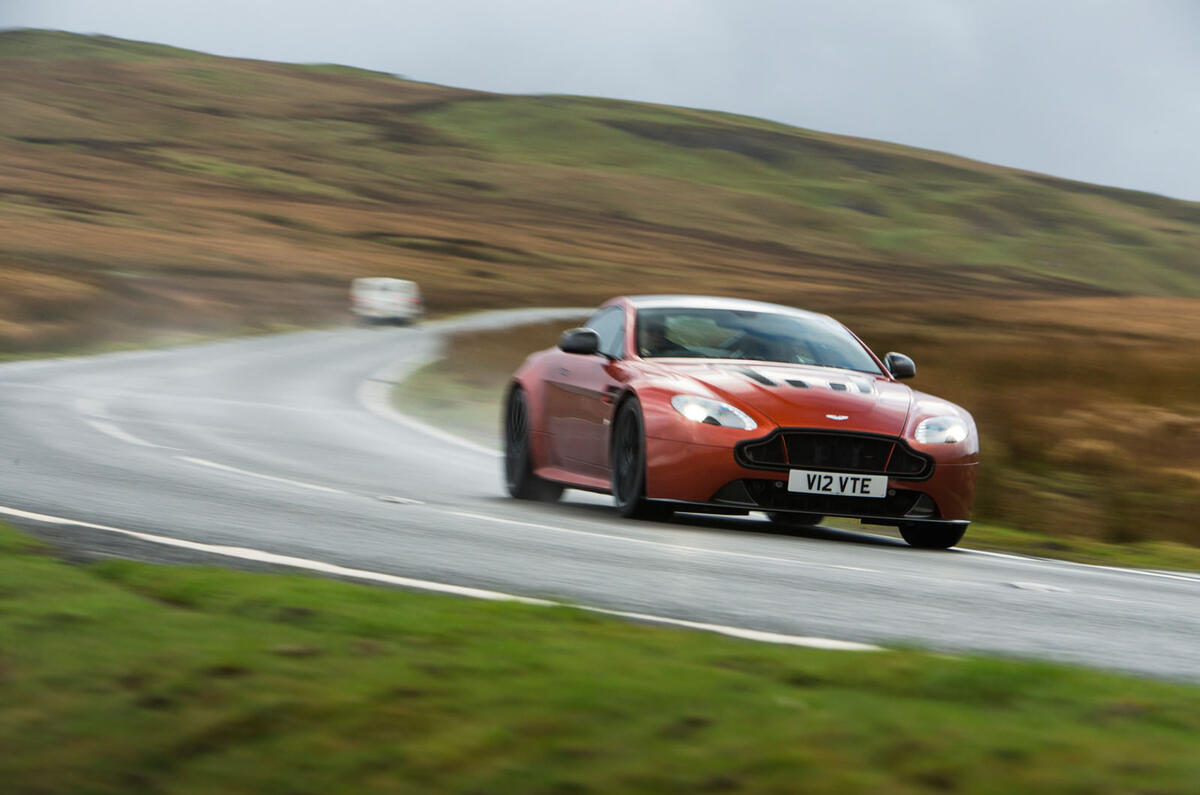
The new R8 has the same drive modes as most of Audi’s saloons, hatchbacks and SUVs. Select Dynamic mode on one like our test car – fitted with optional magnetorheological adaptive dampers and optional active variable-ratio ‘dynamic’ steering – and you end up with a car carefully configured for smooth roads and circuits – and, as it turns out, remarkably poorly set up for a 
wet Welsh mountain pass.
The R8 V10 Plus has new Performance modes for track work as well, but its saving grace turns out to be the Individual setting. This allows you to calm the steering’s active functionality right down and bring back a bit of feel into the system, while simultaneously softening the ride to make it more compliant for road use and keeping the car’s powertrain in a more sporting state of readiness. Set up like this, the car’s handling is more rounded, its steering more coherent and tactile and its ride, though firm, acceptable.
What’s never in question is the brilliance of the R8’s powertrain. For its balance of mid-range tractability and high-rev drama, and the four-wheel drive transmission’s combination of blistering shift speed and feel for the right gear in any one of several automatic modes, it’s outstanding. It’s also a better standard bearer for natural aspiration than the Aston’s V12, which, although characterful, feels leaner on torque and seems to shift gears less quickly and cleverly the longer you’re acquainted with it.
But still, I’m somewhat surprised and disappointed by the R8’s handling. Audi has made a sweeter and more balanced car here than Lamborghini managed of the Huracán, using most of the same hardware – but it’s not as much fun as the Aston. Throw it into a bend on a trailing throttle and there’s liveliness and adjustability. But the lateral stiffness of the R8’s springing makes the handling less forgiving than the previous R8’s.
The slight wooliness and unpredictability of its steering makes it feel less precise. And the four-wheel drive system, which could always be relied upon before to add directional stability with power, is undoubtedly harder to pre-empt. Sometimes, throttle seems to want to send the tail wide, and other times it doesn’t.
With daylight gone and photos done for the day, we drive 40 miles north to overnight digs in Llandovery – and at the end of the drive, I’m no more convinced that Audi has made real dynamic progress with this car than I was a few hours ago. It’s fast, sure. But, in V10 Plus form at least, it’s not as supple, surefooted, communicative or confidence-inspiring as you’d like it to be on the road. It’s certainly not everything it was.
Wednesday, 7.19am: hotel car park, Llandovery - All is well. After a 6am start and a few repeat trips to the town’s most excellent jetwash, I’m looking at a car park, in breaking daylight, featuring all four of our cars together for the first time. It’s a relief, to be honest. I’d worried that we might have lost one or two of them to the risen water table by now.
And so, while the rest of the crew are breakfasting, there’s time to break out a tape measure. (I just can’t help myself at times of excitement.) Before opening up cargo compartments or peering into spaces too small to be useful for passengers, a simple and critical measurement: maximum width, measured windows down, across and through the cabin, from one outer door mirror extremity to the other.
Width can be the death of an otherwise great sports car. It’s more important than ever now because, as cars get wider, the roads and lanes that carry them only seem narrower. It takes barely a moment to note that there’s 115mm between the slimmest and widest cars here. That’s four inches. And when that tractor emerges from behind that hedge, you’d be aware of every one of them.
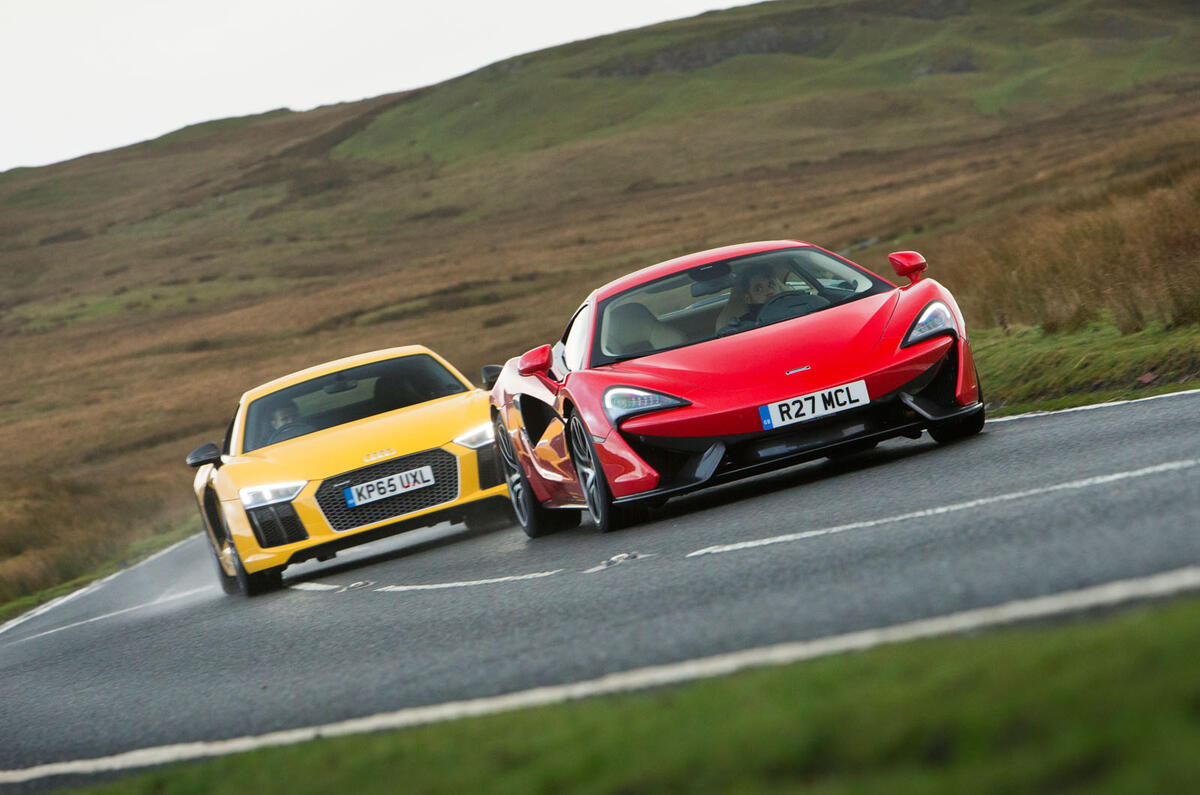
No prizes for guessing that the 911 is slimmest. In years gone by, it would have been so by a greater margin and yet, although it’s only a couple of inches narrower than the field’s average, that’ll be enough to easily notice on the road, I’ll bet.
There’s little between the Aston and Audi on overall width, although the R8 is the wider – and feels it. But the 570S is wider still, by quite a long way, a consequence of the relationship and the carbonfibre tub it shares with McLaren’s other models. Bad news? Perhaps.
On carrying space, the Porsche only asserts its superiority again. The combination of a decent-sized cargo box in the nose with those occasional back seats, foldable to produce as much loading area behind the seats as there is up front, gives the 911 Turbo S as big an advantage on usability today as it has ever enjoyed.
It may seem incredible that companies like Audi and McLaren can design a car from a blank sheet, five decades after the original 911, and still come up short in this respect. Incredible, but unavoidable. Until Neckarsulm and Woking start making rear-engined sports cars, you’d imagine they’ll continue at the same disadvantage.
After the Porsche, there’s a turn-up: the 570S narrowly pips the V12 Vantage S on practicality, thanks to a particularly generous cargo box up front and some useful space behind the seats and under the rear window for coats and small, squashy bags. The Aston’s boot is wide and quite long but shallow, allowing you to load stuff up to the back seats, and roomy enough for smaller weekend cases and bags but nothing bigger. The Audi brings up the rear on practicality, offering some limited space on a shelf behind the seats but not much, and only a fairly small carrying box in the nose.
Wednesday, 10.43am: near Cantref Reservoir - Against all the odds, the day started fairly dry in the Brecon Beacons National Park. It didn’t stay that way for long. The short hop up here from Llandovery was in light wind and rain. But it might have been bone 
dry and dead calm for all I knew: the grip, stability and unflappable composure of the 911 Turbo S was 
just other-worldly.
When travelling in a convoy, there are times when you know that the car you’re driving is coping much better with the conditions under its wheels than the others. You just drive differently; more confidently than your companions. Not faster, necessarily – UK speed limits having an understandably calming influence on the drivers of conspicuous 500bhp sports cars travelling together through rush-hour traffic – but more positively, quicker up to the legal limit, with a keener eye for overtaking and what advanced driving instructors used to call ‘making progress’.
That’s how the Turbo S felt earlier this morning, with the R8, V12 Vantage S and 570S disappearing in my rear-view mirrior. Compared with the Audi driven in similar conditions the night before and, to a lesser extent, the Aston Martin, the Porsche felt perfectly in tune with the slippery conditions. With the adaptive dampers set soft, it rode with just the right mix of tautness and compliance, breathing over the bumps rather than pummelling them. It had just enough feel and feedback through the steering to get a sense of the lateral grip level available, and to gauge the severity and camber of the surface being crossed.
There was sufficient agility and response to place the car perfectly on the road, and to keep it where you wanted it. And you had nothing but enormous torque and traction the instant you called for it, delivered without so much as a hint of wheelspin or the merest squirm of wasted energy.
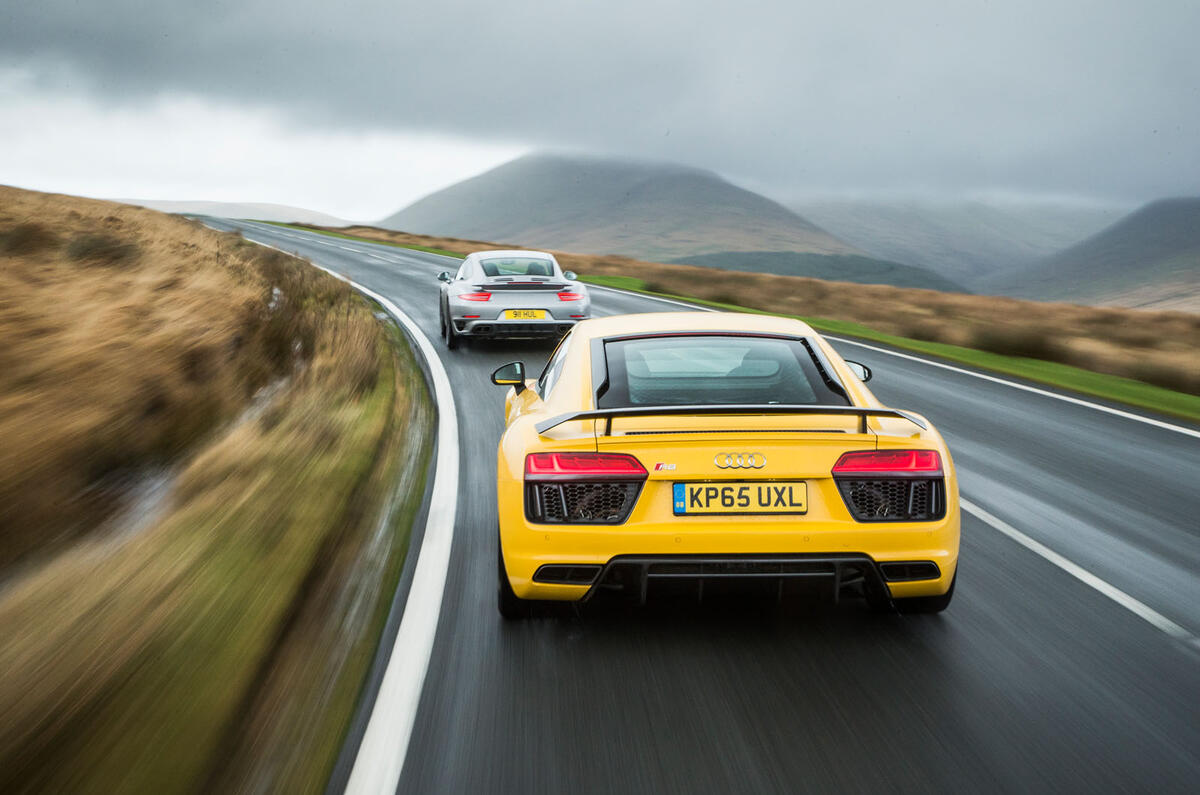
Now the 911 is stationary, along with the rest of our convoy, in this small car park just off the road, only for the kind of weather to hove in from across the valley that books of the Old Testament were written about. Within minutes, bordering roads previously only slightly treacherous become perilous to everything – including the 911. Photographer Lacey downs tools, 
and we can do nothing but wait. And wait. For a while, Storm Barney is not to be trifled with.
An hour and a half later, as some breaks finally emerge in the cloud cover, it is to the 570S that I finally turn. A left-hand-drive model was all that McLaren could supply us with for this test, so we’ll save conclusive observations about the car’s width for another day. Suffice to say for now that, sure, it feels wide, but perhaps not too wide for most UK roads.
Its driving position is excellent: fine seats, almost too much steering column adjustment. Visibility is remarkable thanks to McLaren’s habitually low scuttle and skinny pillars. And although the cabin has its quirks – possibly the least intuitive seat adjustment console I’ve ever attempted to use, and an infotainment system I still struggle to penetrate, even after trying it several times – it’s comfy, solid, modern, attractive and upmarket.
The Ricardo V8 stutters into its usual noisy, gravelly, slightly toneless idle after start-up. It’s docile when manoeuvring and at low speeds and still feels slightly soft under your right foot on the road.
But even at middling revs and 
off boost, the 570S feels light, lithe and energetic, like nothing else 
here. That’s because it is light. It 
has 200kg on the next lightest car 
in our field, in fact.
Although fairly firmly sprung and always keen to change direction, it rides sensationally well – better than you’d imagine it could, given that this is the first McLaren road car of the current era to use conventional dampers and anti-roll bars. And there is such weight, positivity and detailed feel to the steering that its directness and the firmness of the car’s suspension simply don’t become problems for it on the road.
Yes, you have to concentrate when you’re driving; guide the car with more care and attention than in some of the others here and use the throttle a bit more judiciously. But even in the wet and on standard Corsa tyres no less, the McLaren’s grip level is dependable, its stability controls effective and its handling secure, communicative, delicate – and just 
so involving.
Which is to say nothing of what happens when you do use the 
throttle a bit. Wow. Fans of performance numbers will already have worked out that the McLaren’s 418bhp per tonne is a 21% improvement on what a 911 Turbo S 
gives you in full cry – and a 911 
Turbo S is still a very fast car for 
your princely £140k.
Unlike the Porsche, you have to allow the McLaren to rev a bit to really let it off the leash. So you 
drop a couple of ratios in manual mode and squeeze the accelerator, rather than just mash the pedal, anything-goes style, as you can in the 911. But the 570S rewards you with a rate of acceleration that’s nothing short of stellar. It’s supercar level, really. I’d be amazed if a Ferrari 488 was much quicker.
The 570S’s brake pedal feel could and should be improved. It has racing car brakes (surprise, surprise), dead at the top of the travel and hard to modulate initially in a way that rivals with carbon-ceramic brakes have already moved beyond.
But in other ways, the McLaren shows just how much genuine supercar can now be bought for super-sports-car money – 911 Turbo money. The cat is most definitely among the pigeons here, and there are feathers everywhere.
Wednesday, 3.34pm: just off the A470, near Pen-y-Fan - We’re wrapping up. Motorists on Wales’ major north-south trunk road honk, wave and, in some cases, swear at four morons in a roadside car park standing beside their flashy motors in the gathering gloom and cold. By the time Cackett asks me for the finishing order of these four cars, 
my mind is made up about the sharp end, but it’s separating the runners-up that’s hard.
The biggest underachiever is easy, although that tag doesn’t do the car justice. Everyone expected more from the R8: a more tactile drive, greater dynamic roundedness and greater usability. The powertrain is awesome, but the four-wheel-drive chassis fails to deliver either the handling security or panache to really distinguish it on the road. More varied tests will come but, for now, the R8 still has it all to prove.
The Vantage feels as though it has been around for so long that it can have absolutely nothing left to prove – and in V12 S form, it remains a rough diamond. It offers simplicity, luxury and pure mechanical charisma as an alternative to the bamboozling complexity of its rivals, and although it isn’t on the same sporting level as the best dynamic acts here, it would always be an absorbing, disarming, enjoyable car to drive. Worth a podium place? Just about, I reckon.
And then? Both the 911 Turbo S 
and the 570S would make a deserving winner here. The Porsche is still absolutely untouchable in its own niche. Nothing else will take apart a streaming, slippery cross-country B-road with the same fluency, stability, user-friendliness and easy precision as it does, or cope better with the real world. In the past, I’ve never really understood the 911 Turbo. After a couple of miserable, wonderful days in Wales, I think I get it. There’s certainly nothing else like it.
But I also wonder if the car-loving world isn’t moving beyond it now – if everyone who is in or has been in the market for the ultimate, pragmatically minded, everyday super-sports car hasn’t owned at least one 911 Turbo already and 
may now be looking for something 
a bit different.
The 570S is different, all right; it’s lighter, keener, faster, more involving and more specialised. It’s less usable, too – and we mustn’t forget that. But it succeeds even more spectacularly in what Porsche tried to do 40 years ago with the original 911 Turbo, and in what Audi tried eight years ago with the original R8 – and has still to perfect. It pulls the rug out from underneath the fully fledged, £200,000-plus, thoroughbred Italian mid-engined exotic. “Anything you can do,” it says, “I can do better.” And cheaper – although you can whisper that last bit if you like.
Step forward and take a bow, then, Britain’s latest and possibly greatest giant-slayer: the McLaren 570S.
Read Autocar's previous comparison - Peugeot 308 GTi versus Ford Focus ST
McLaren 570S
Price £143,250; 0-62mph 3.2sec; Top speed 204mph; Economy 25.4mpg; CO2 258g/km; Kerb weight 1244kg; Engine V8, 3799cc, twin-turbo, petrol; Power 562bhp at 7500rpm; Torque 442lb ft at 5000-6500rpm; Gearbox 7-spd dual-clutch auto
Porsche 911 Turbo S
Price £142,120; 0-62mph 3.1sec; Top speed 198mph; Economy 29.1mpg; CO2 227g/km; Kerb weight 1605kg; Engine 6 cyls horizontally opposed, 3800cc, twin-turbo, petrol; Power 552bhp at 6500-6750rpm; Torque 553b ft at 2200-4000rpm; Gearbox 7-spd dual-clutch auto
Aston Martin V12 Vantage S
Price £138,000; 0-62mph 3.9sec; Top speed 205mph; Economy 19.2mpg; CO2 343g/km; Kerb weight 1665kg; Engine V12, 5935cc, petrol; Power 565bhp at 6750rpm; Torque 457b ft at 5750rpm; Gearbox 7-spd robotised manual
Audi R8 V10 Plus
Price £134,500; 0-62mph 3.2sec; Top speed 205mph; Economy 23.0mpg; CO2 287g/km; Kerb weight 1555kg; Engine V10, 5204cc, petrol; Power 602bhp at 8250rpm; Torque 413b ft at 6500rpm; Gearbox 7-spd dual-clutch auto

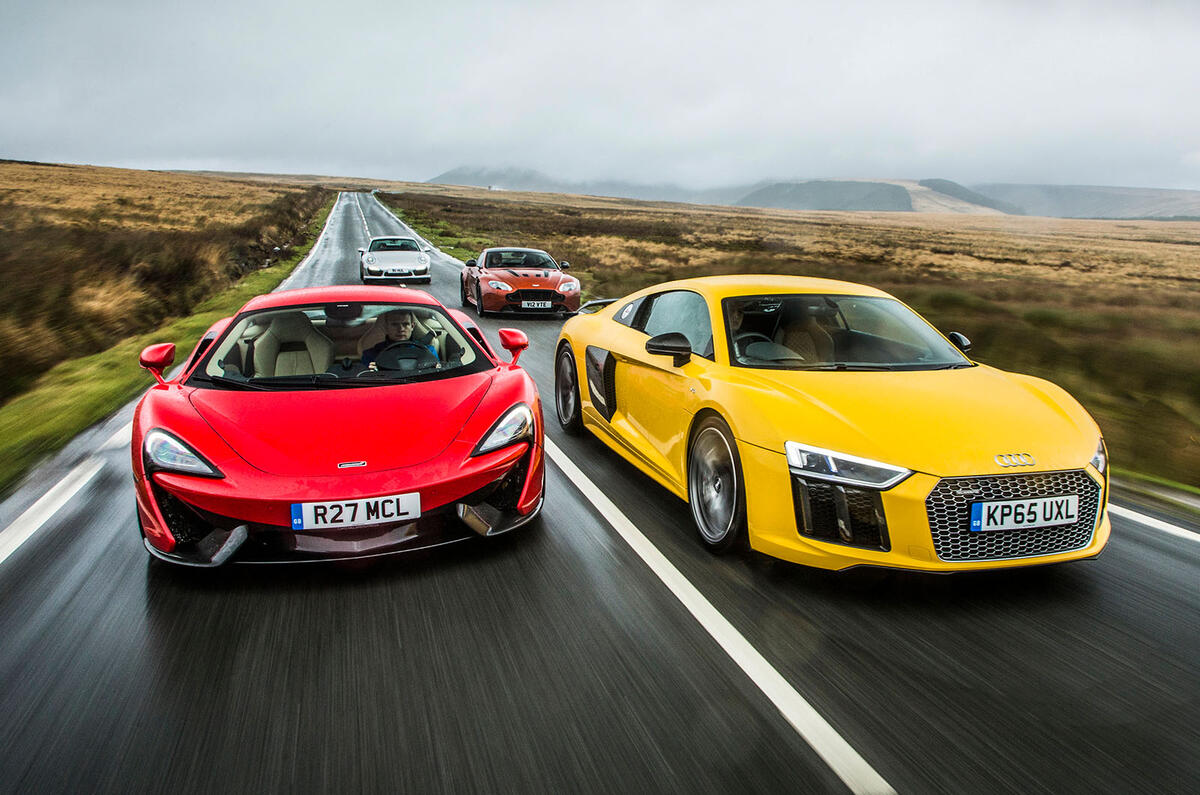
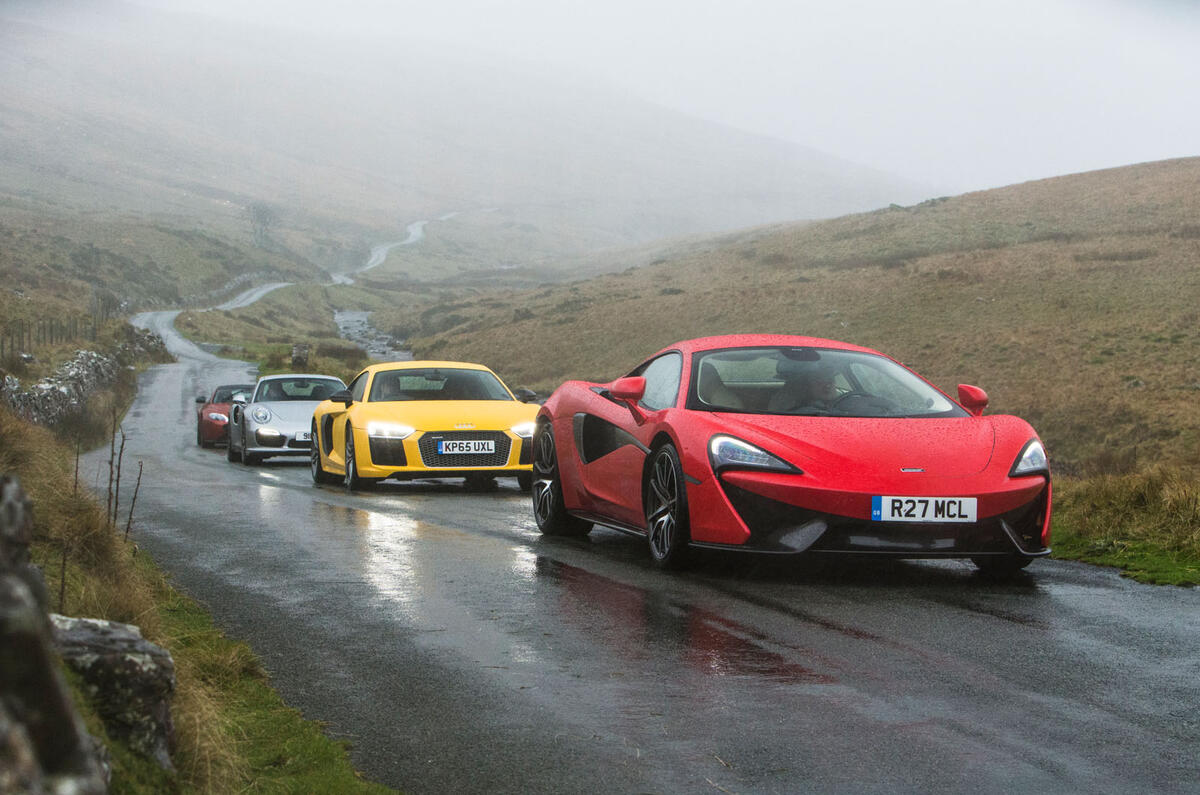
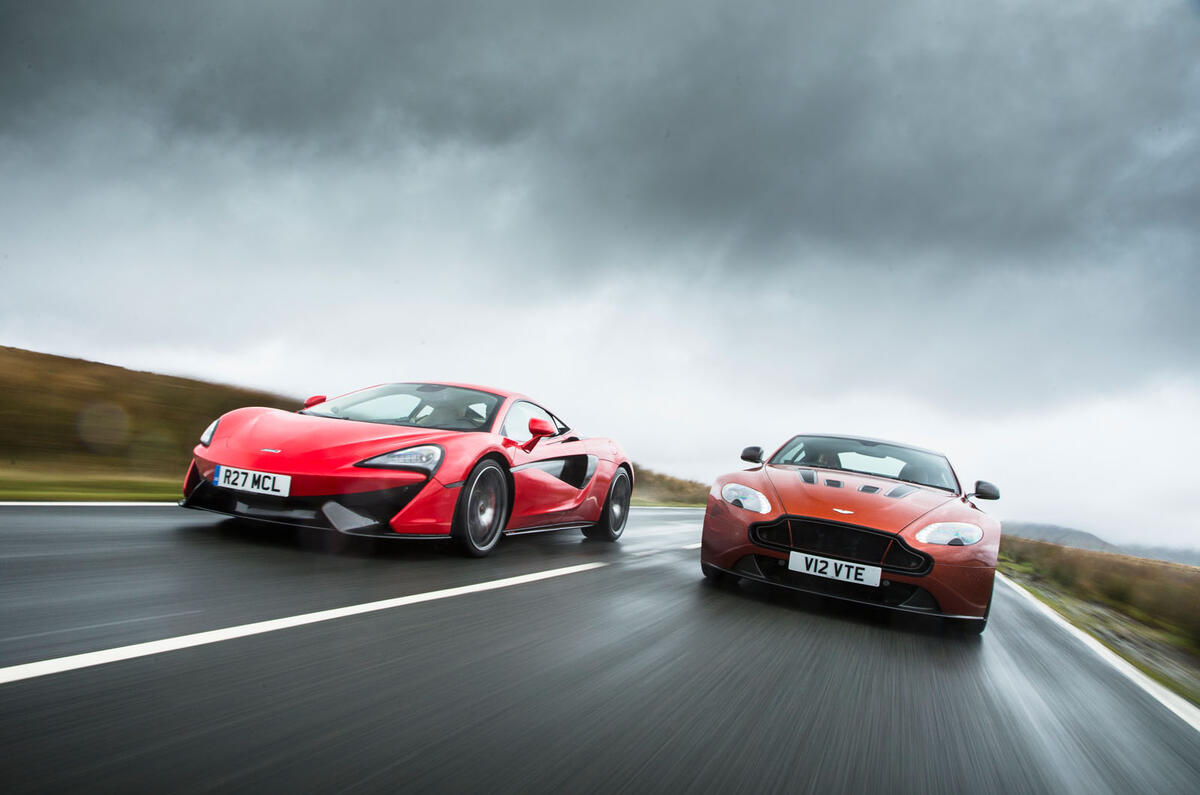
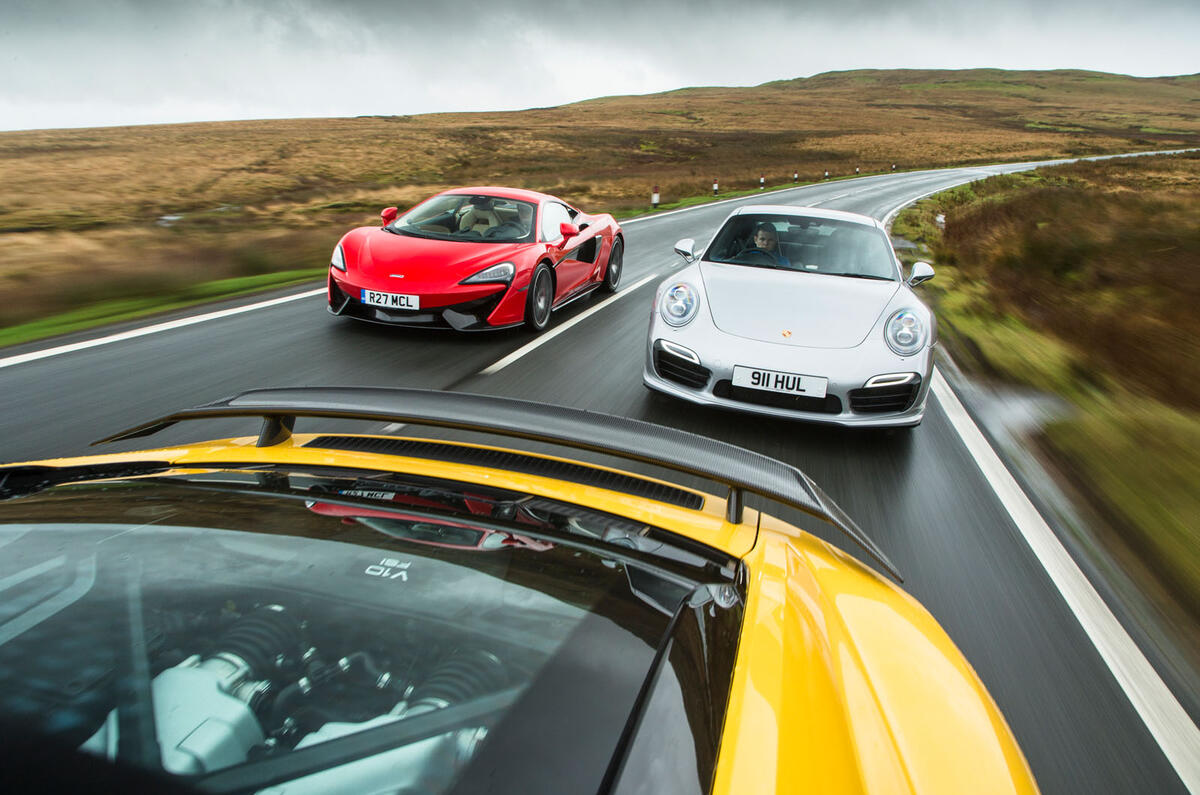
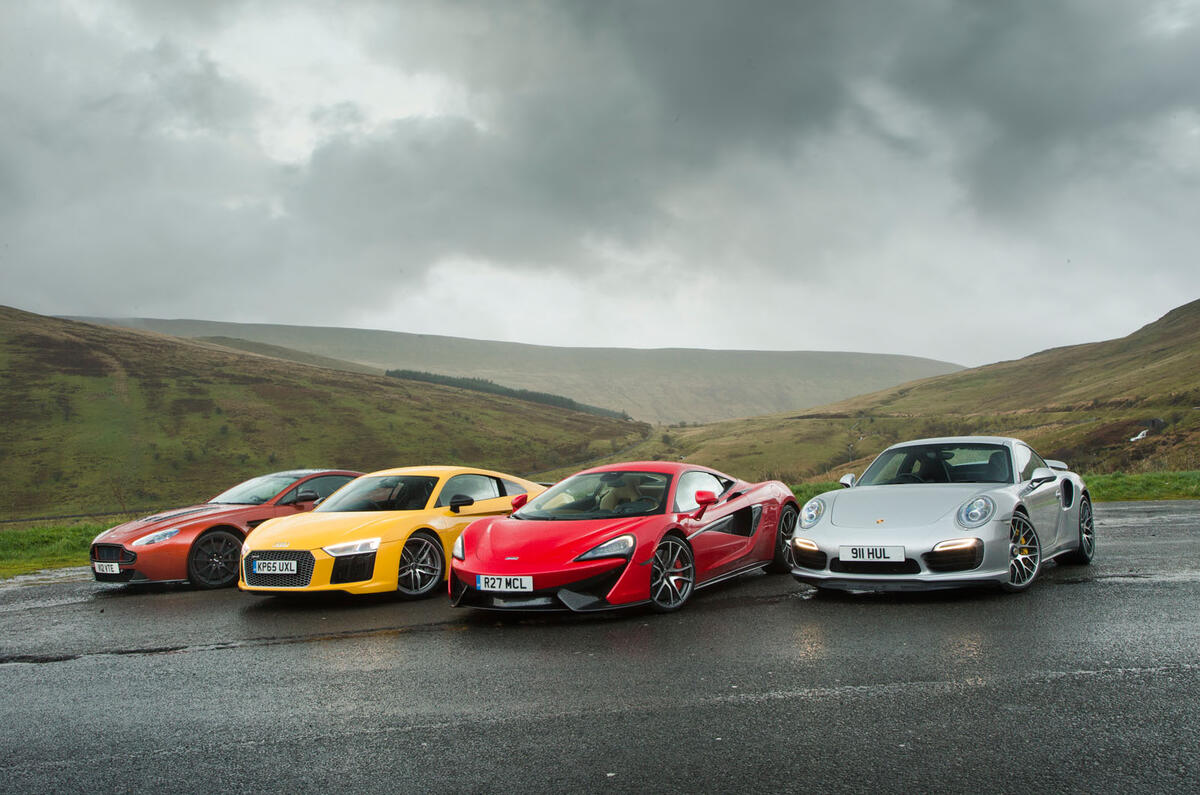
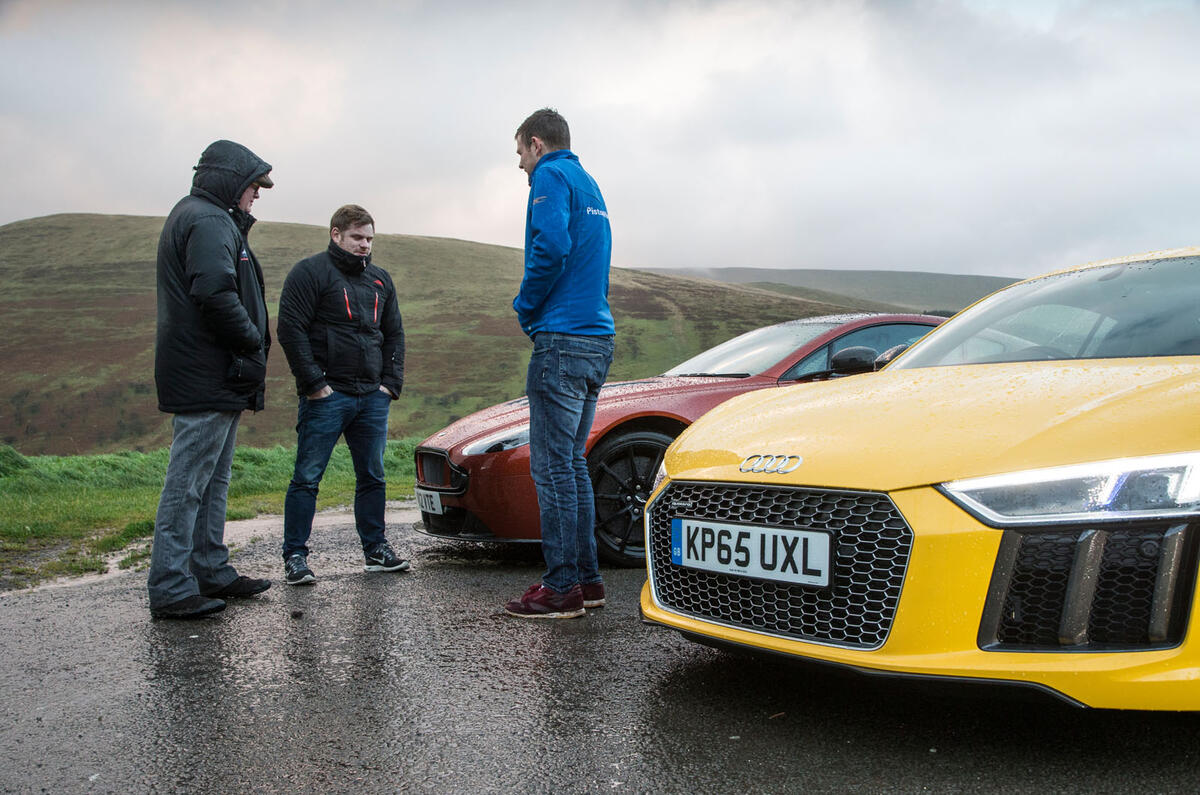
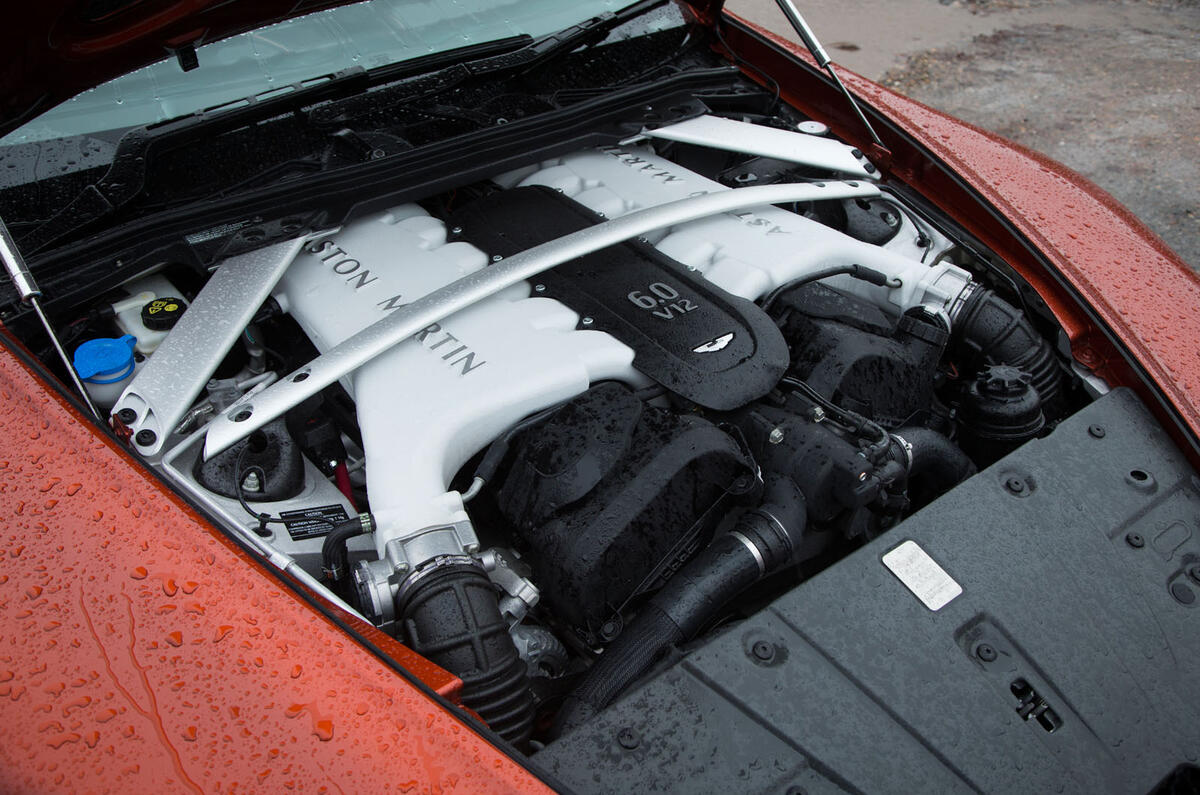
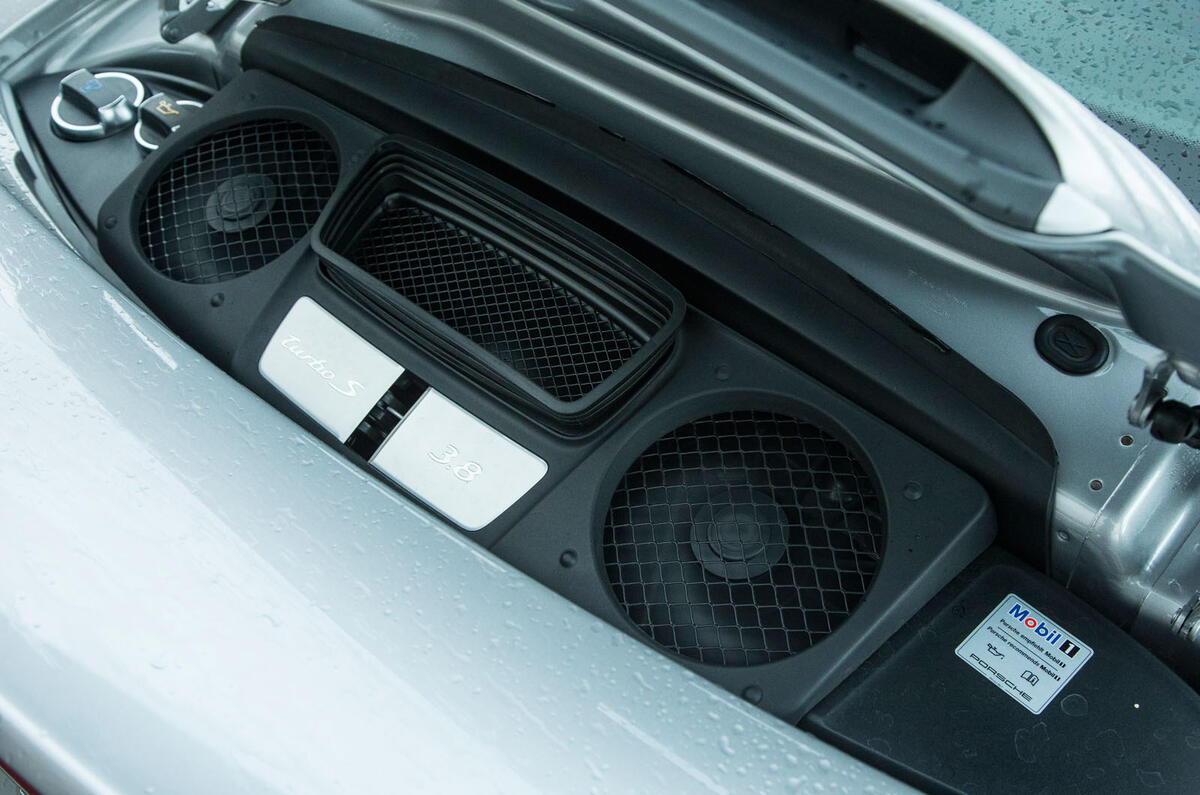

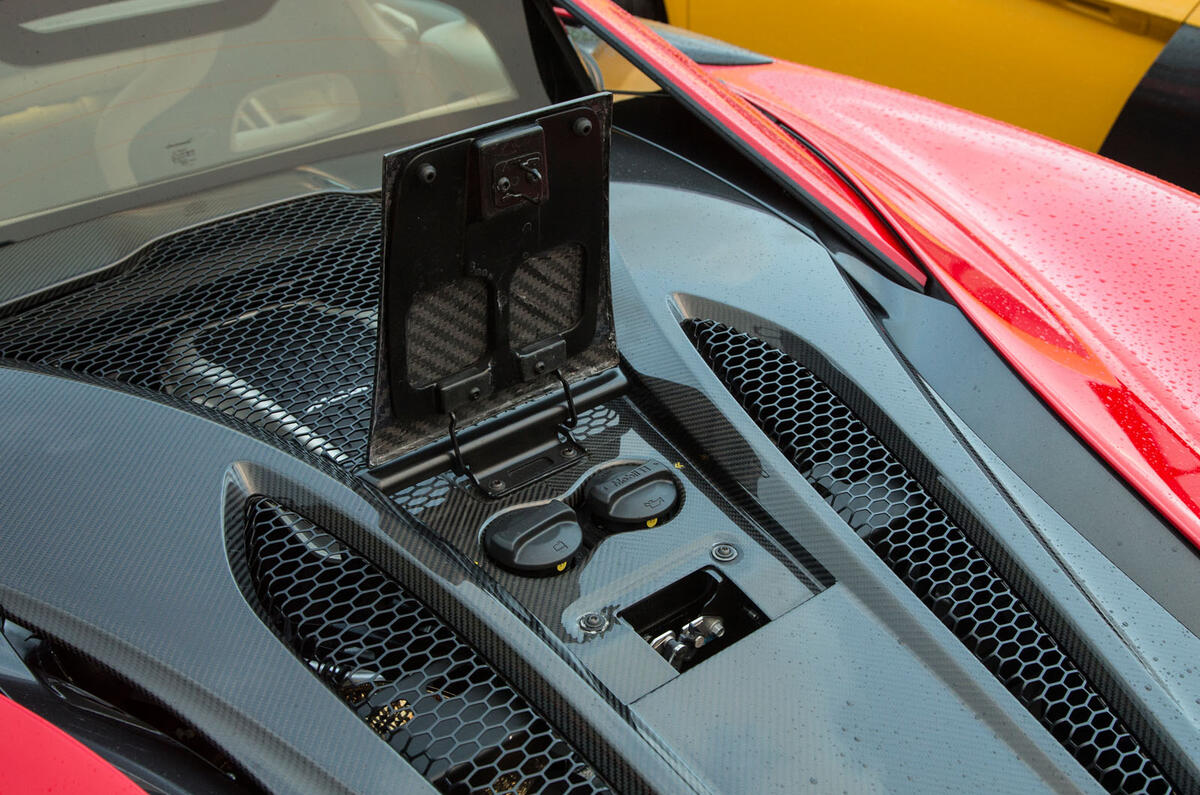

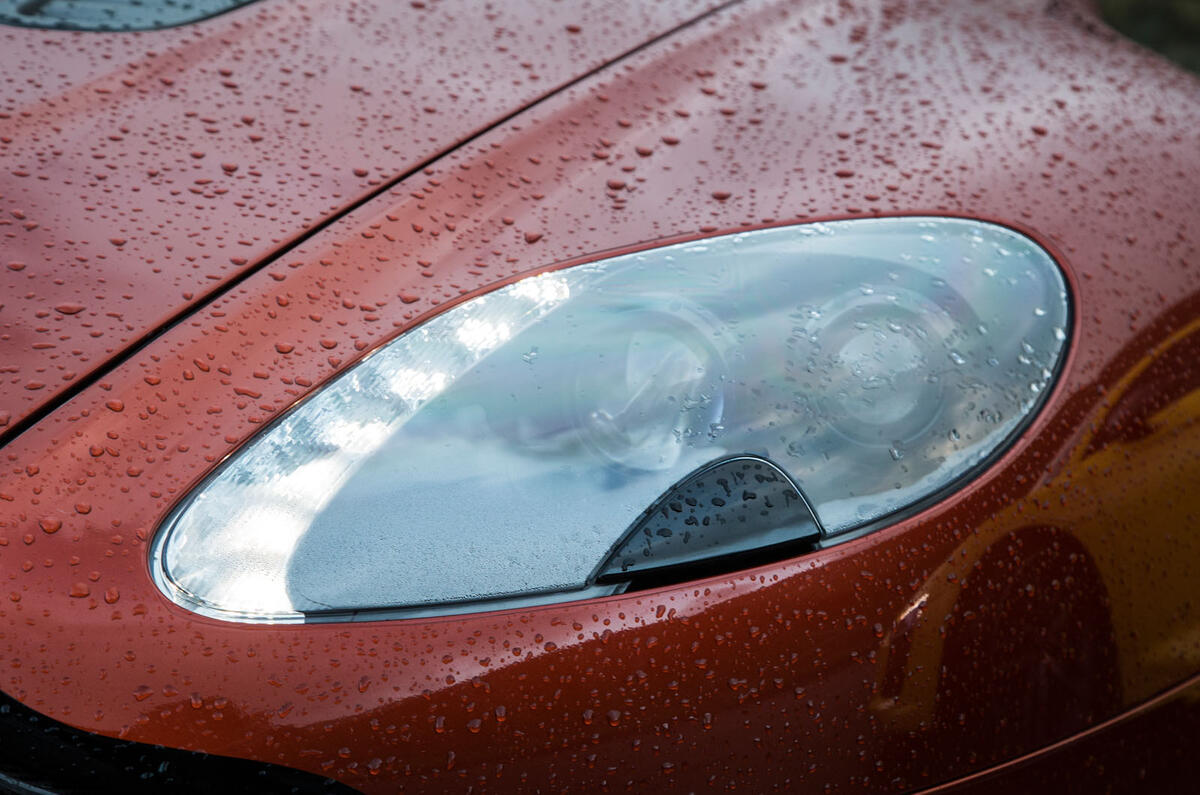
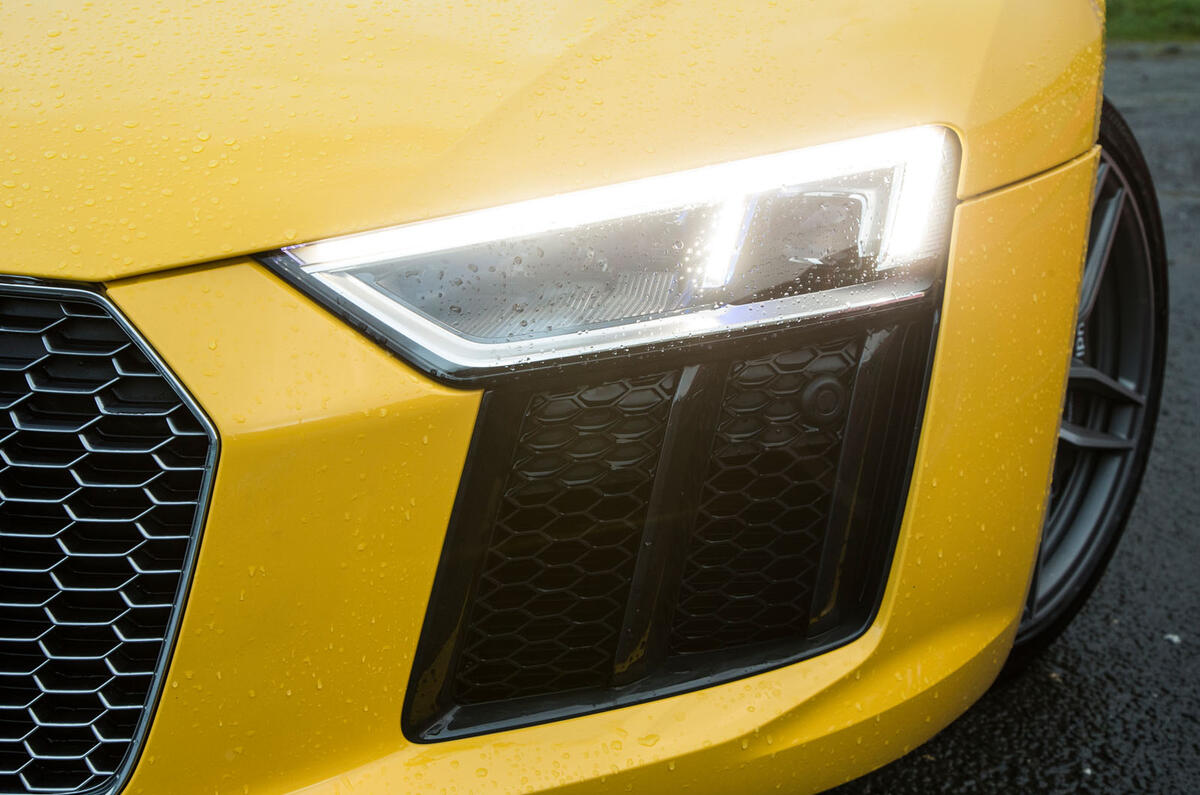
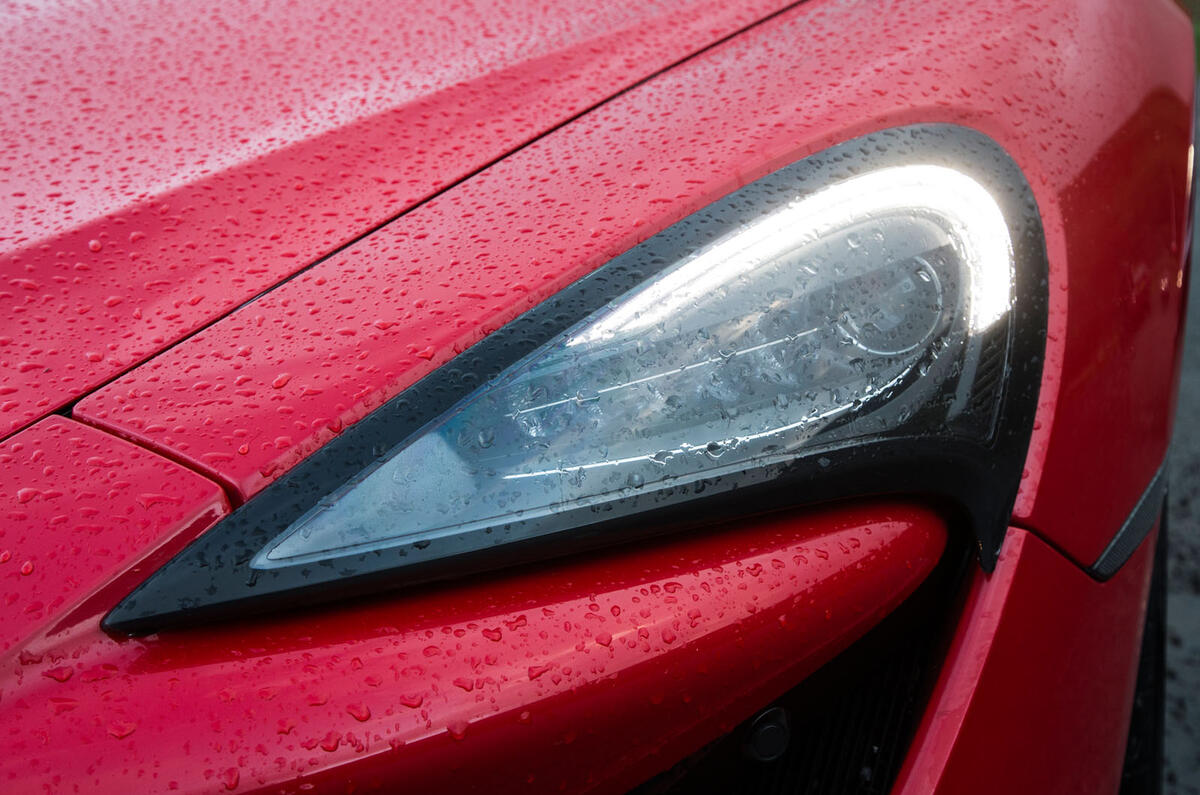
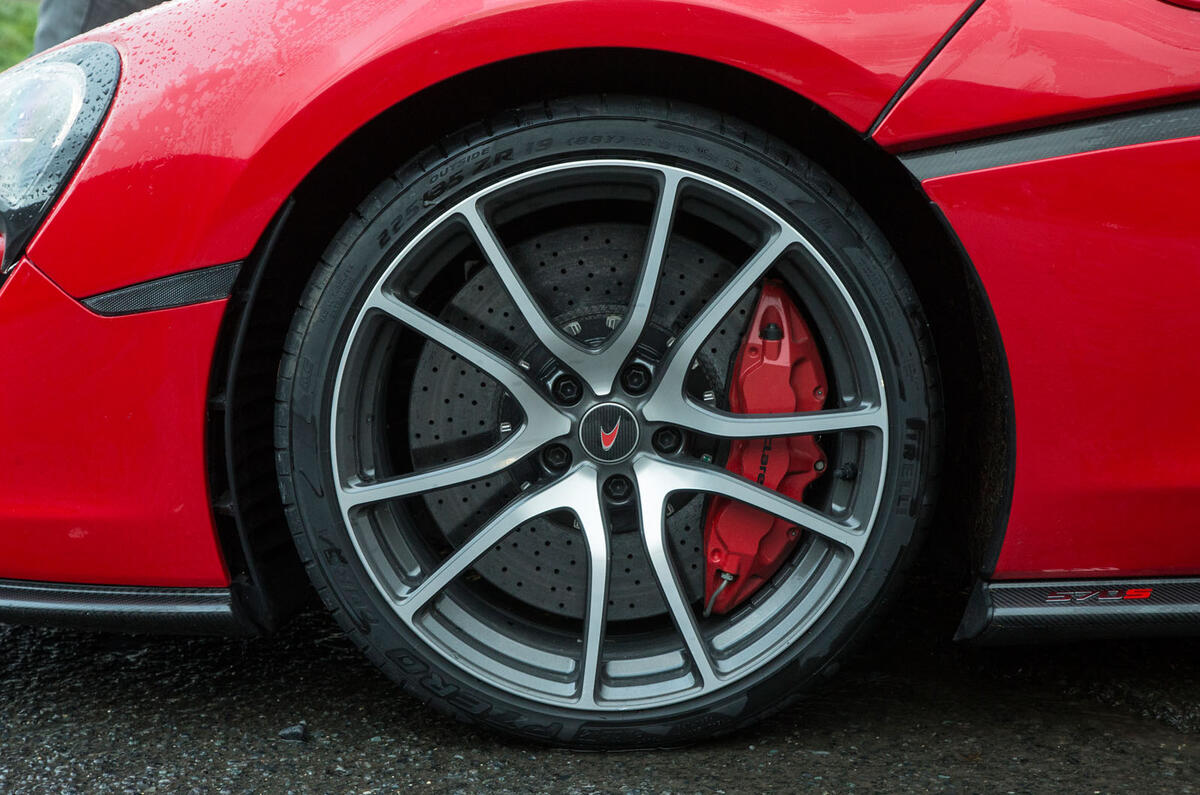
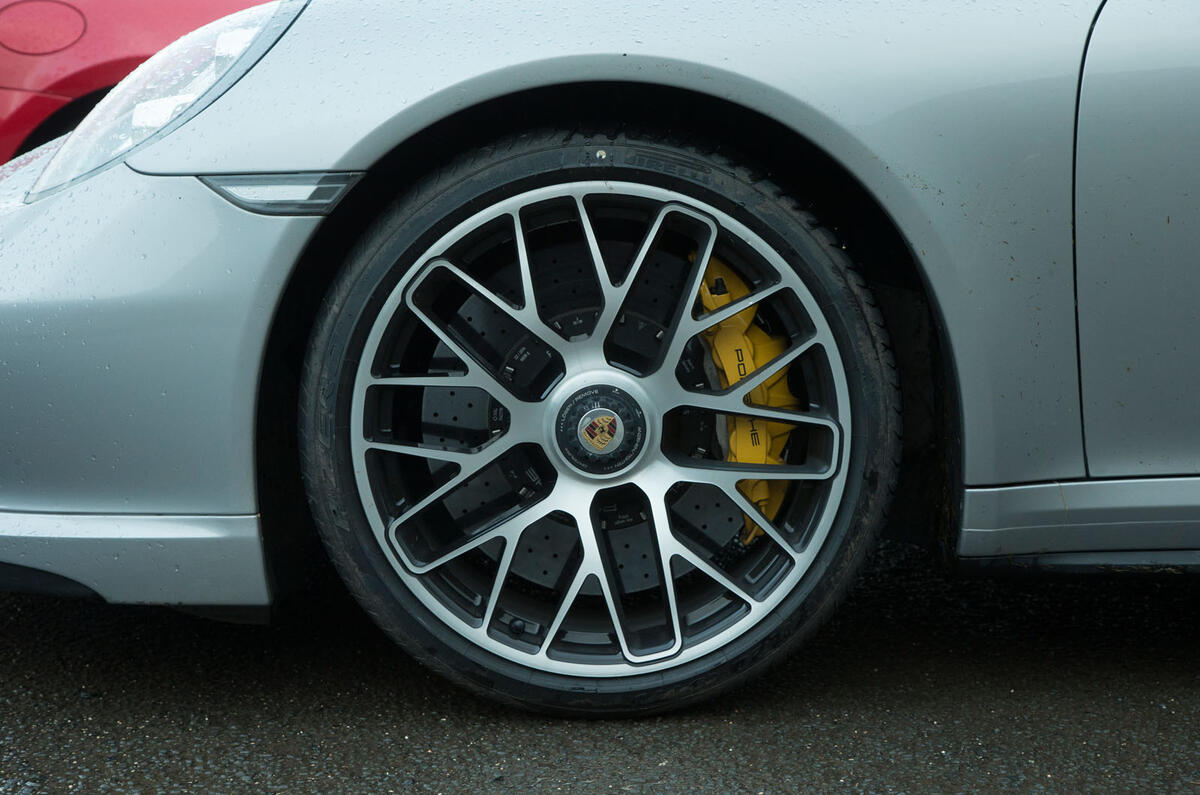
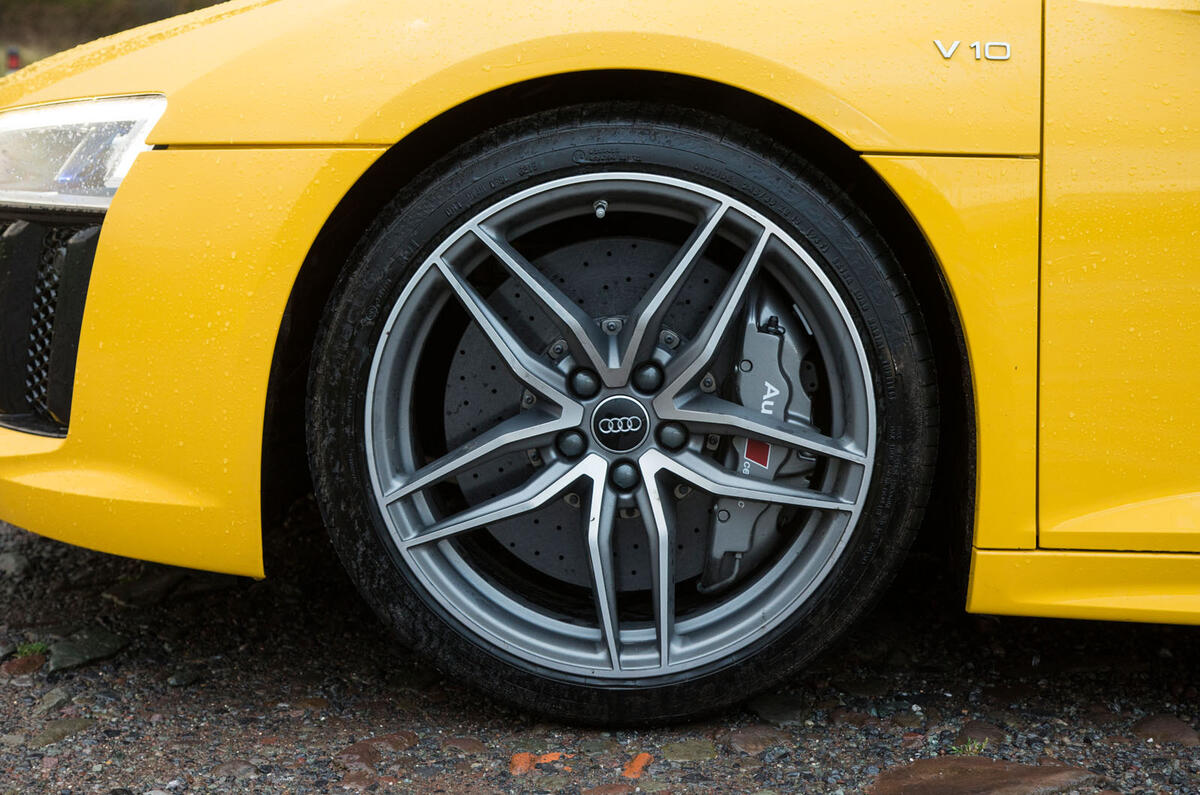

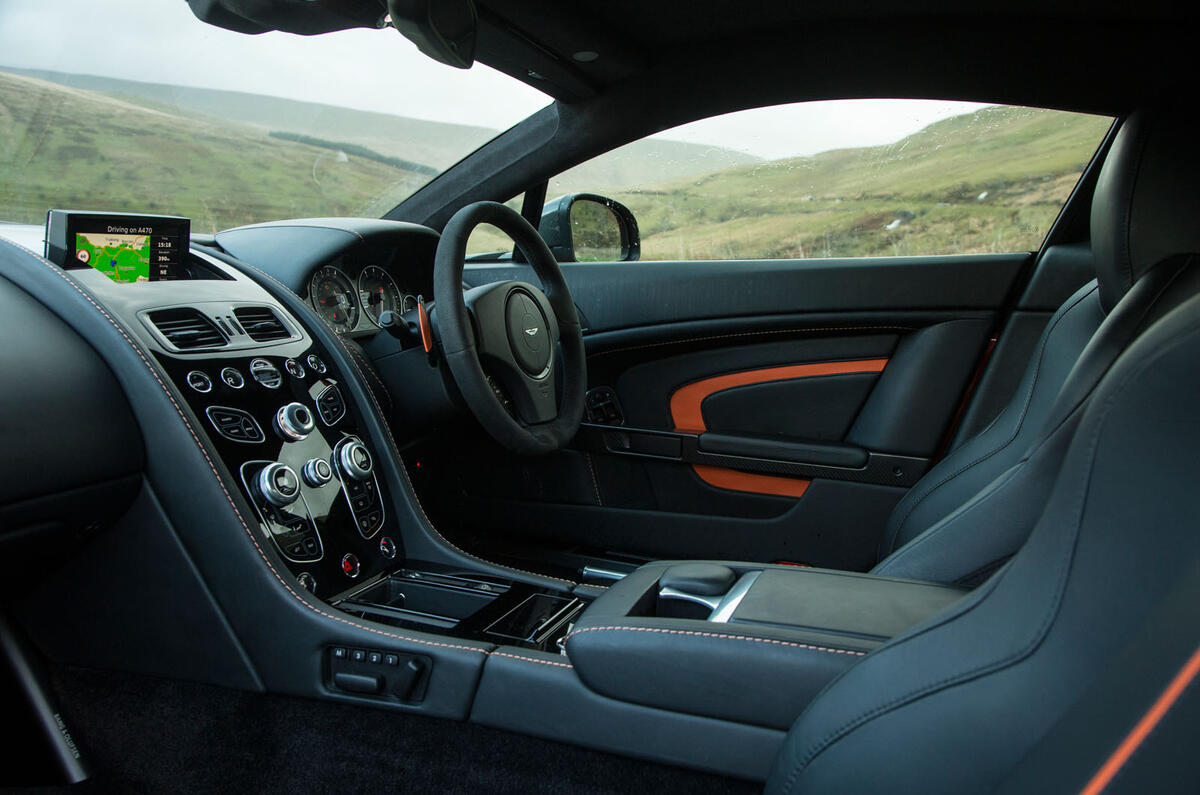
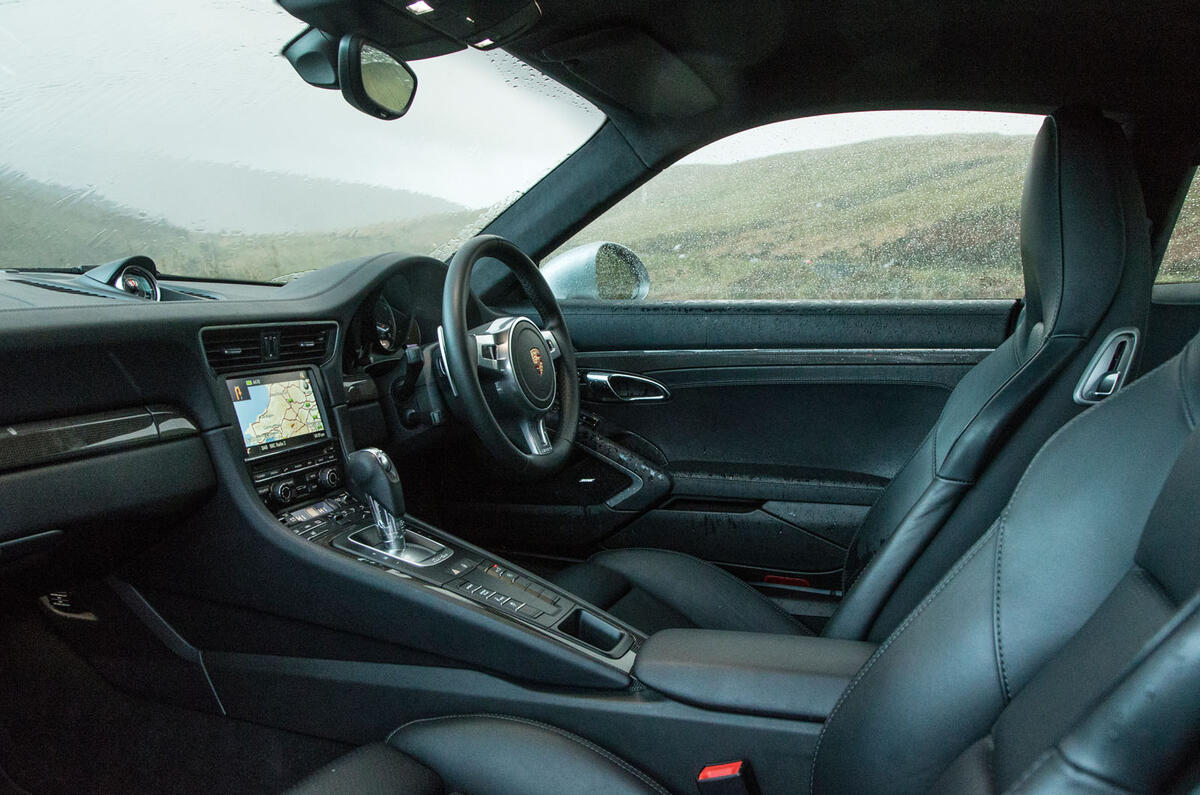
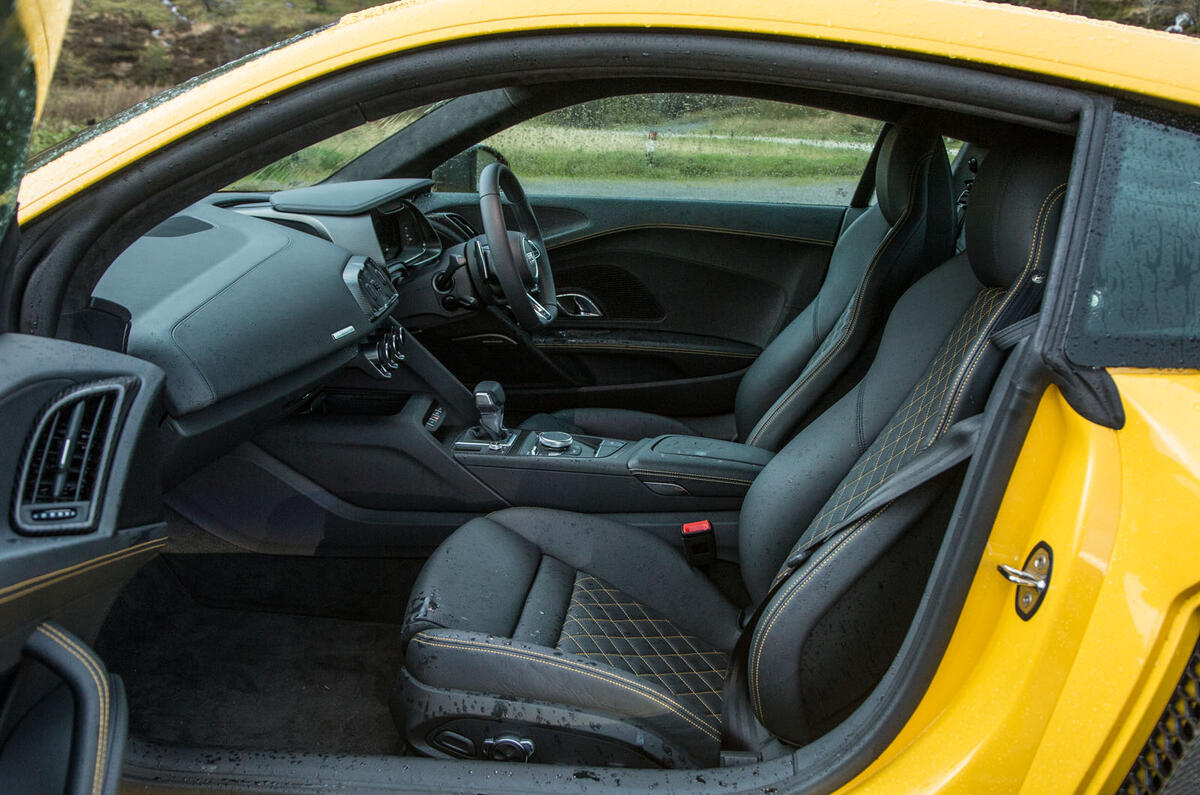
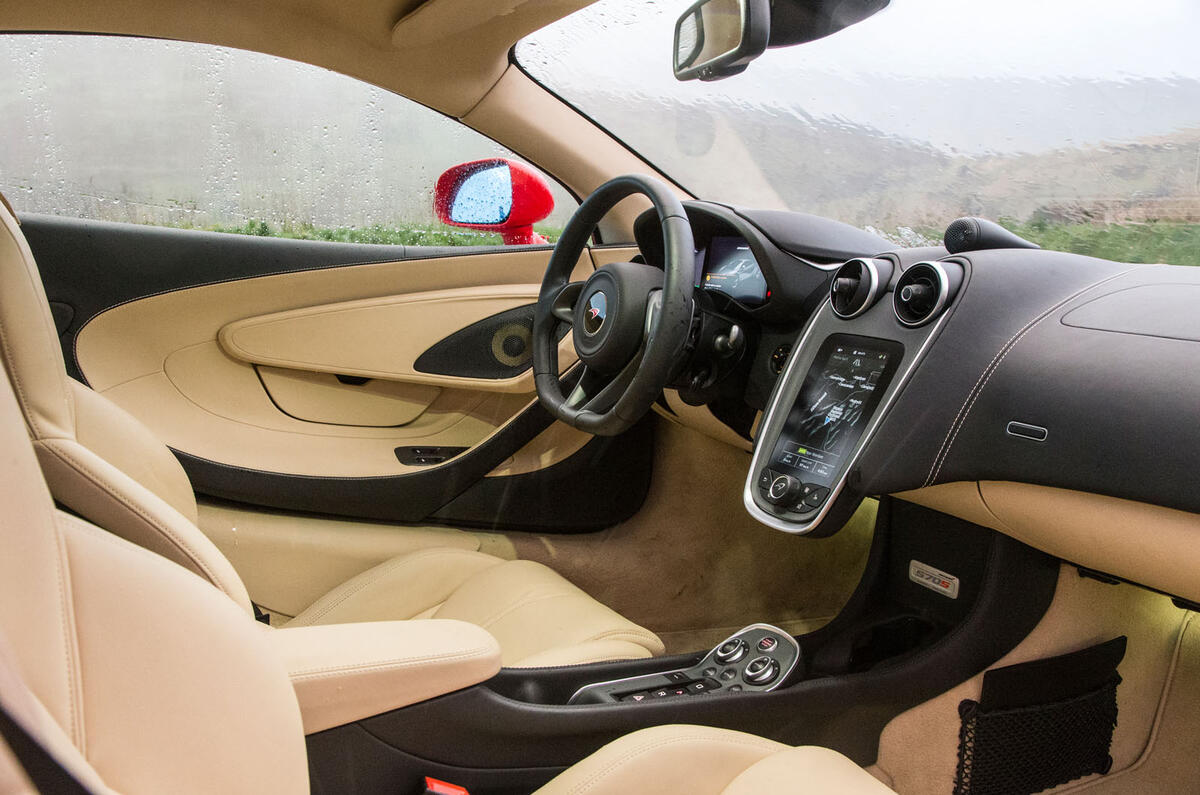
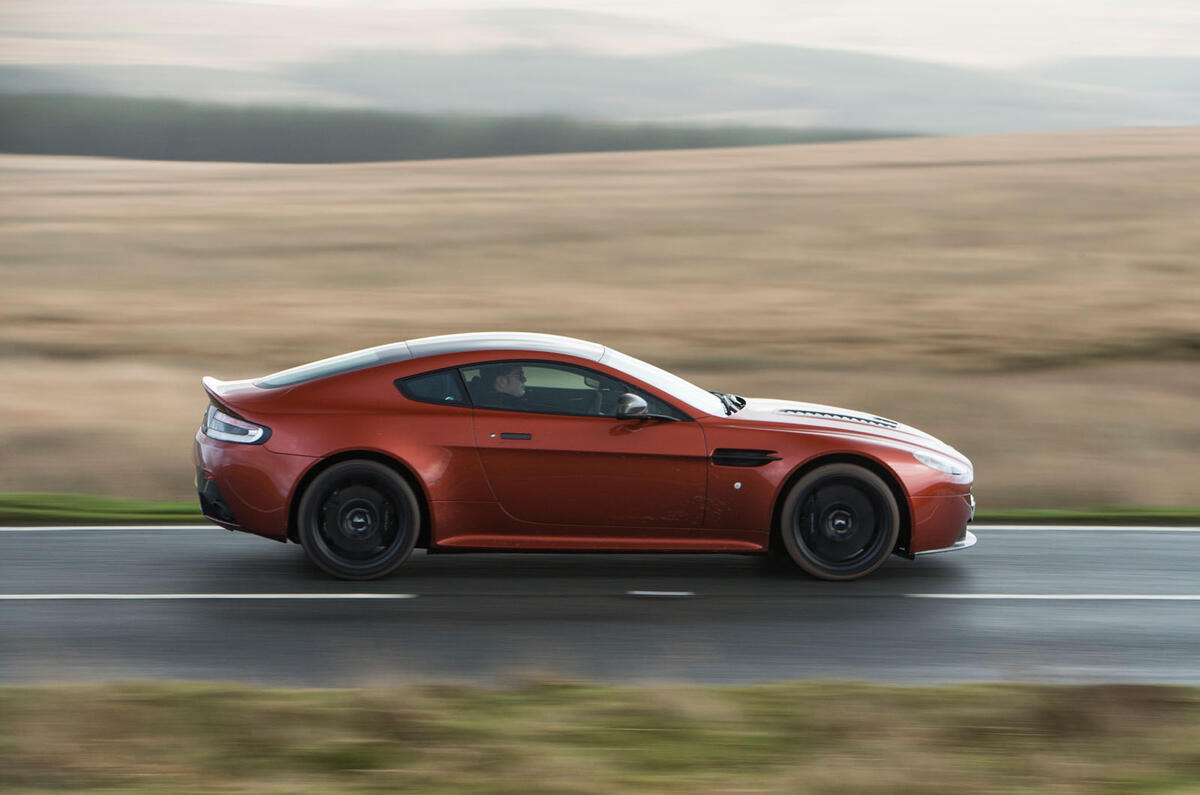
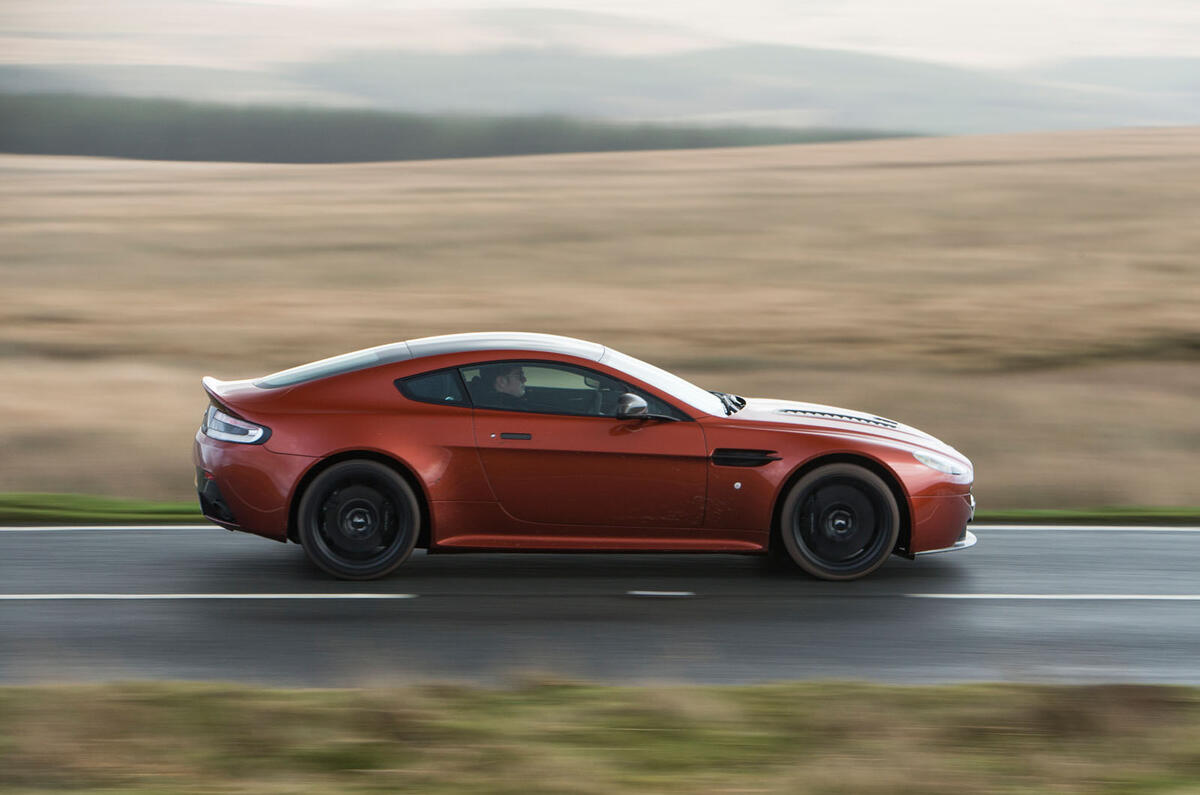
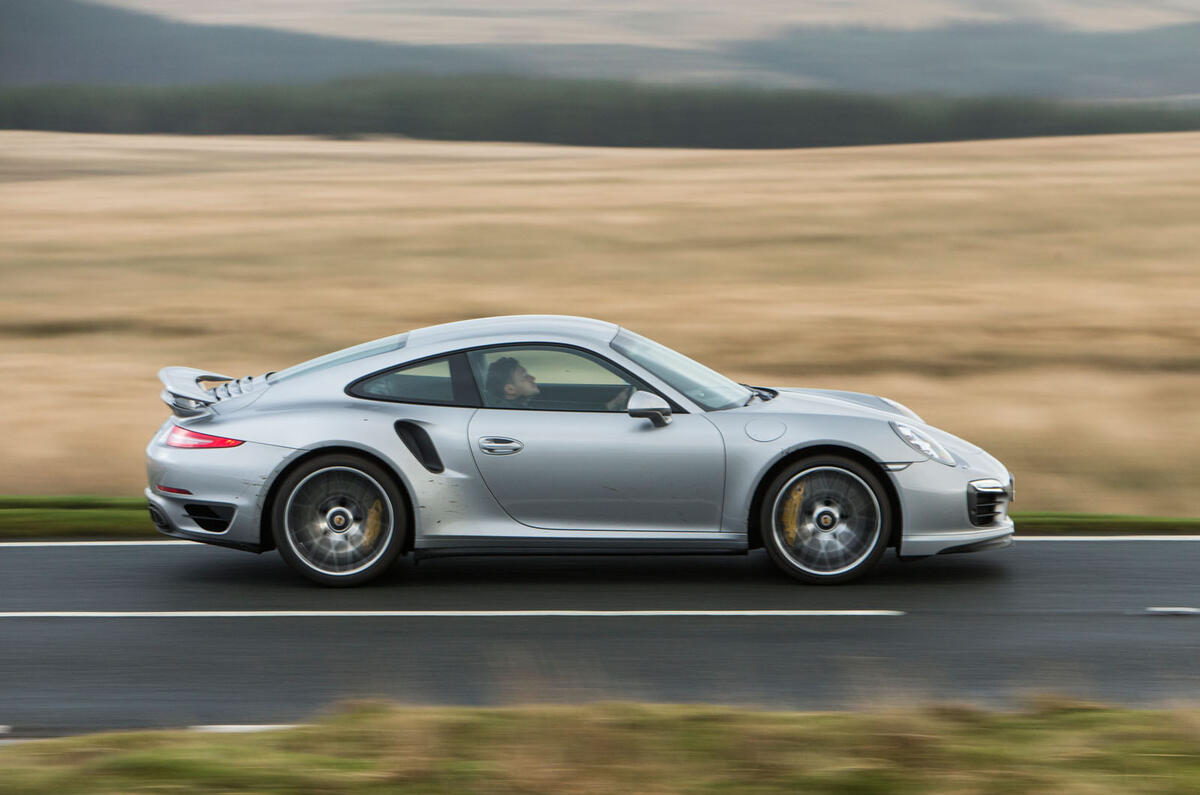

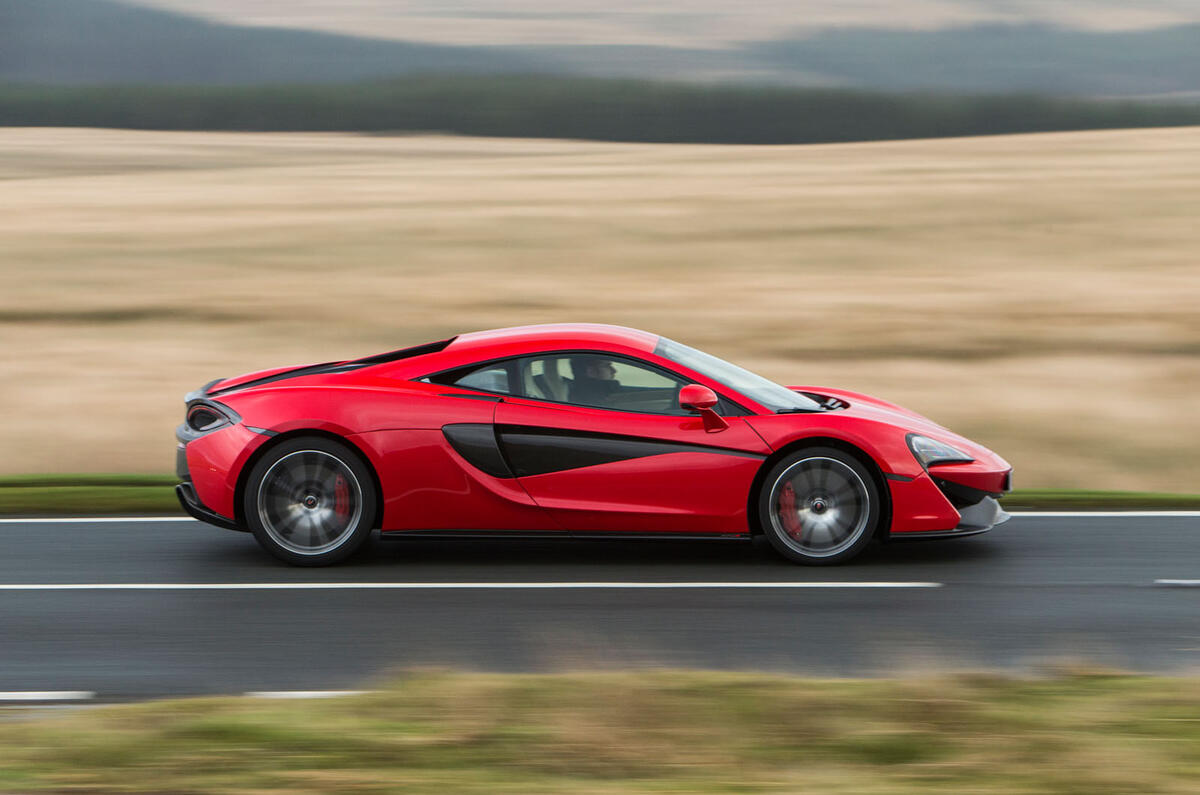
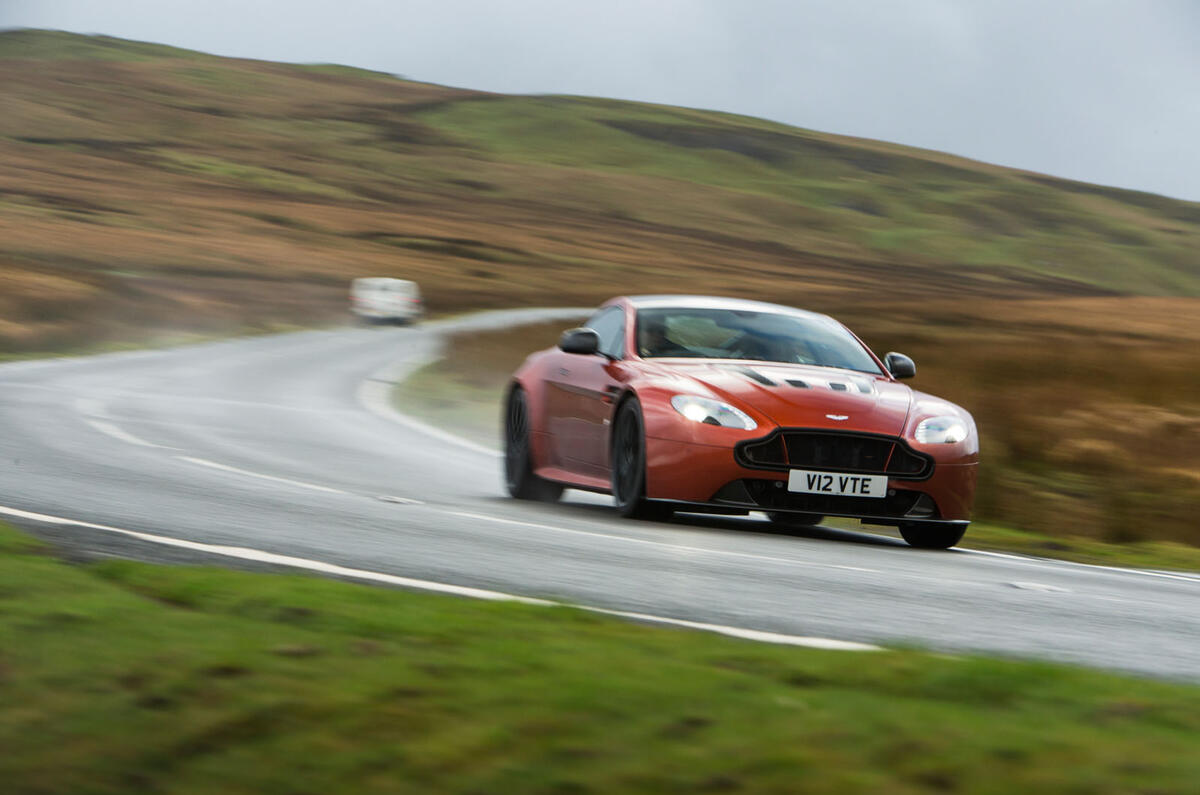
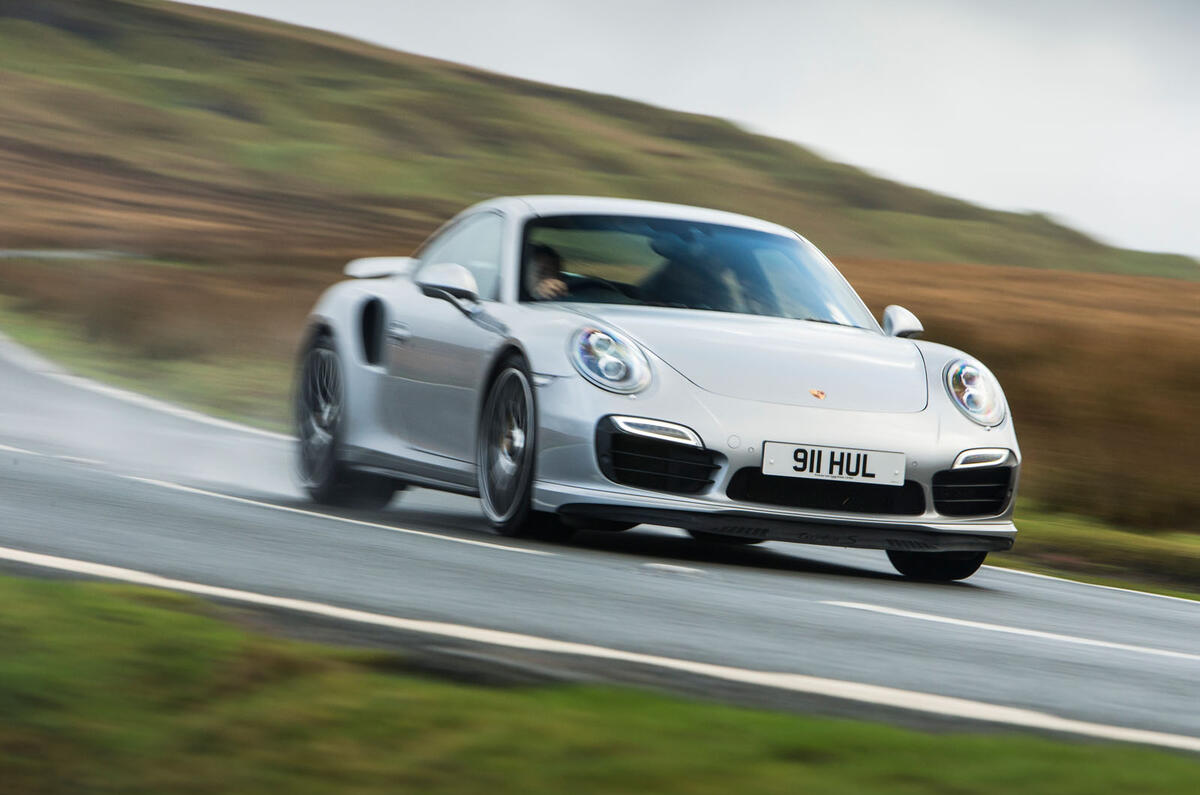
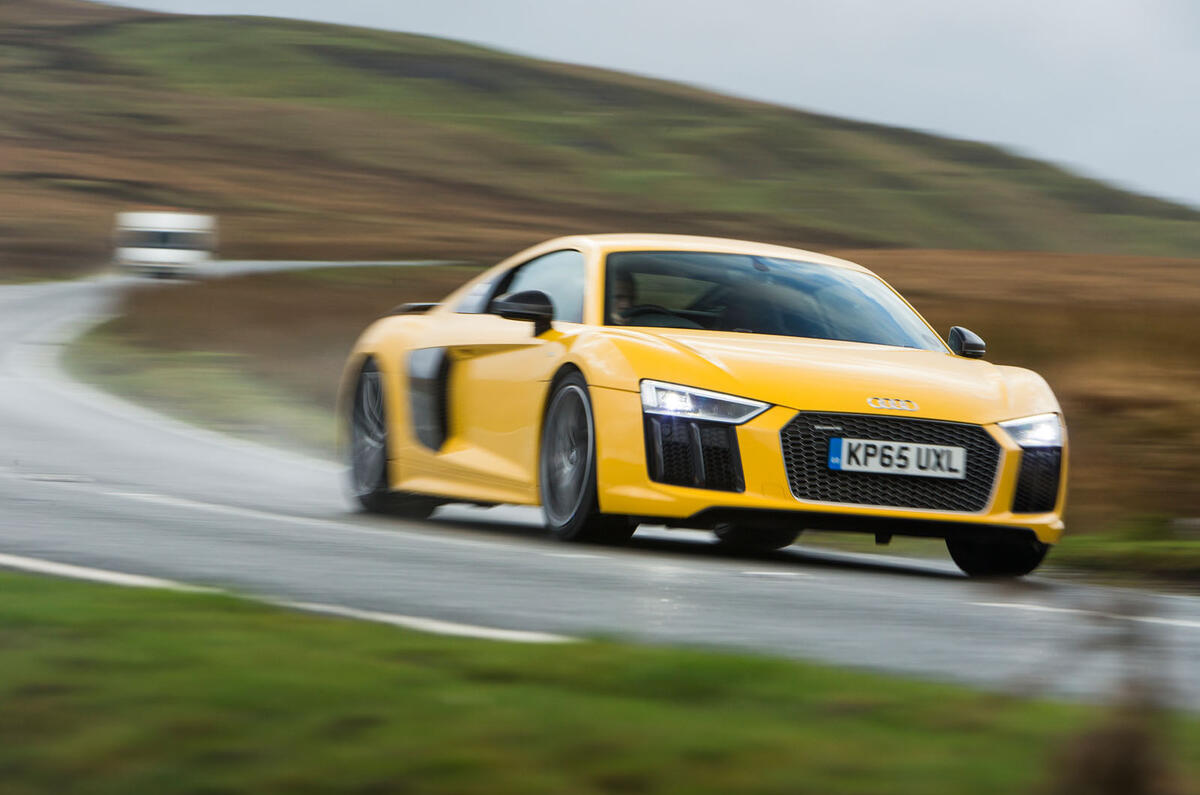
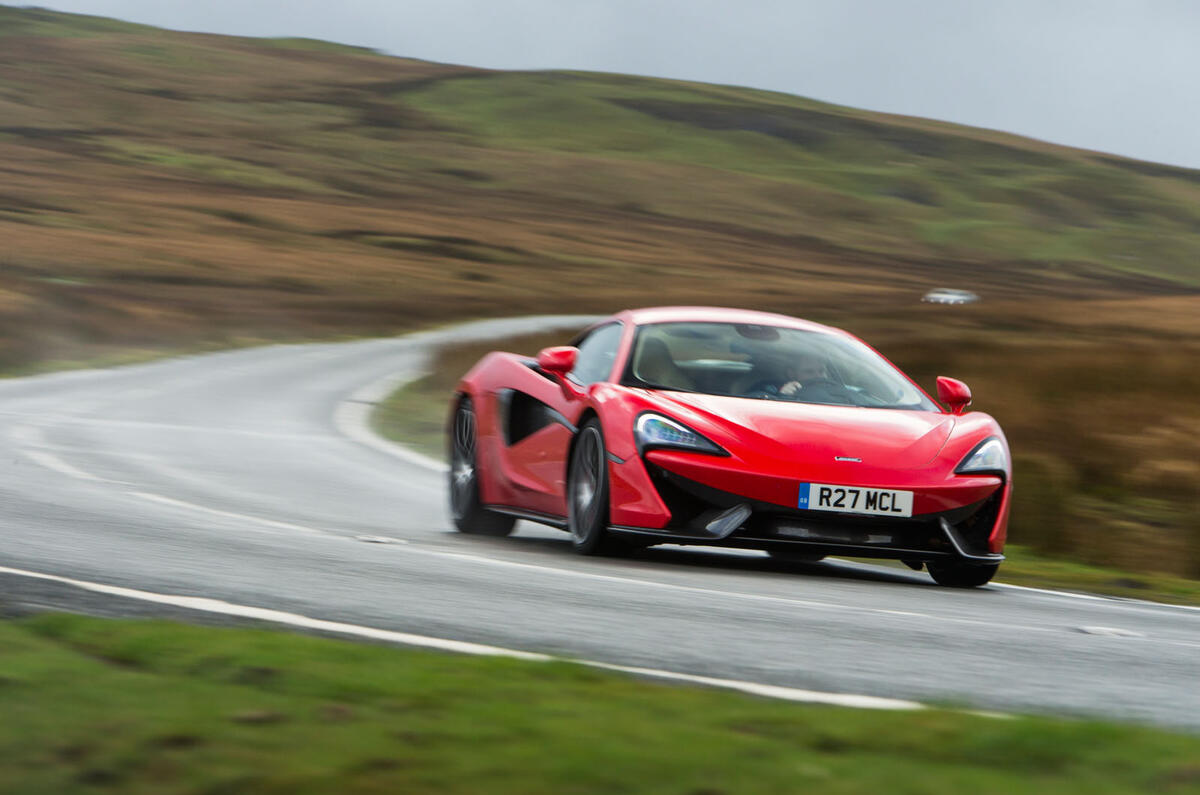
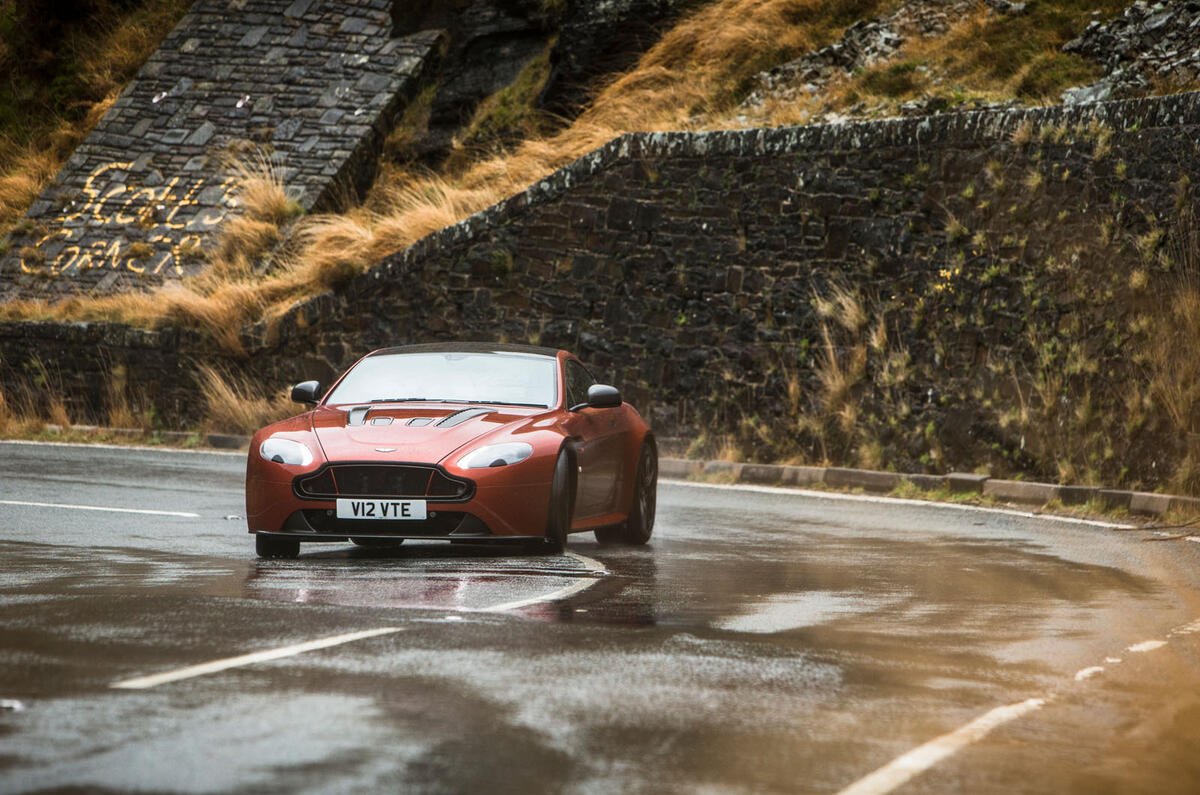
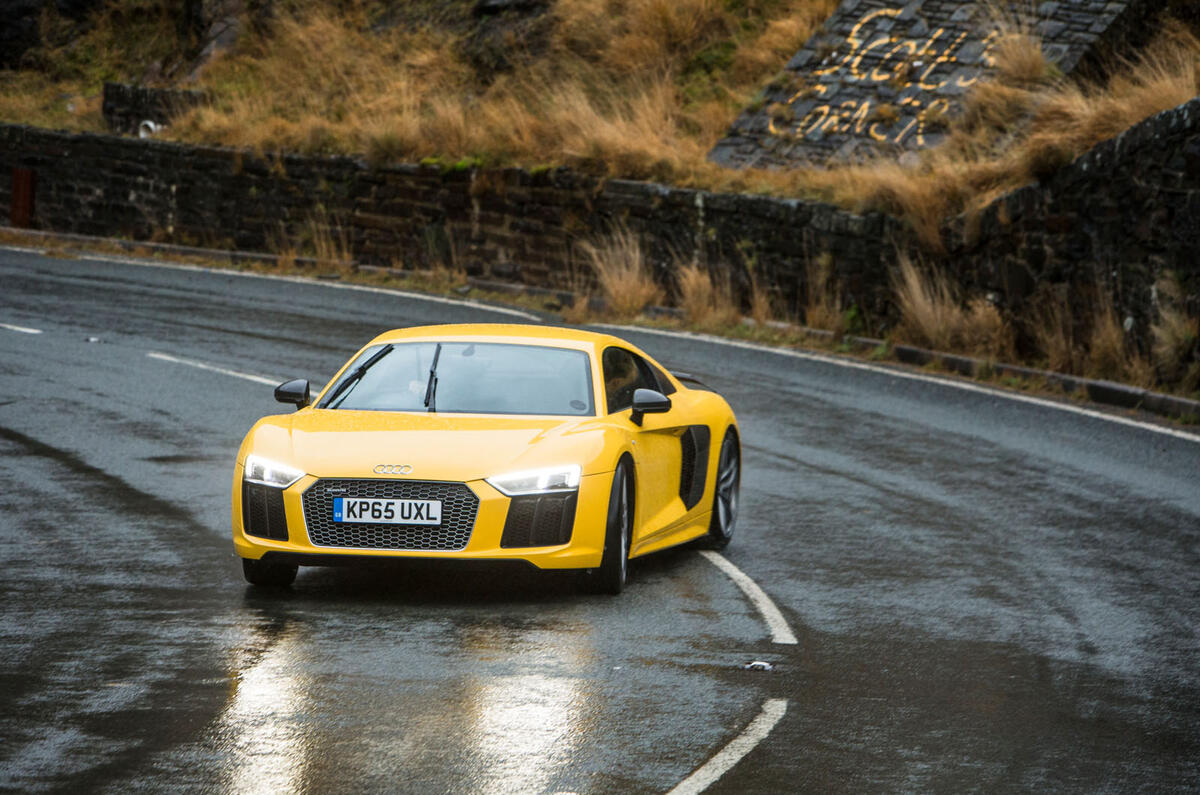
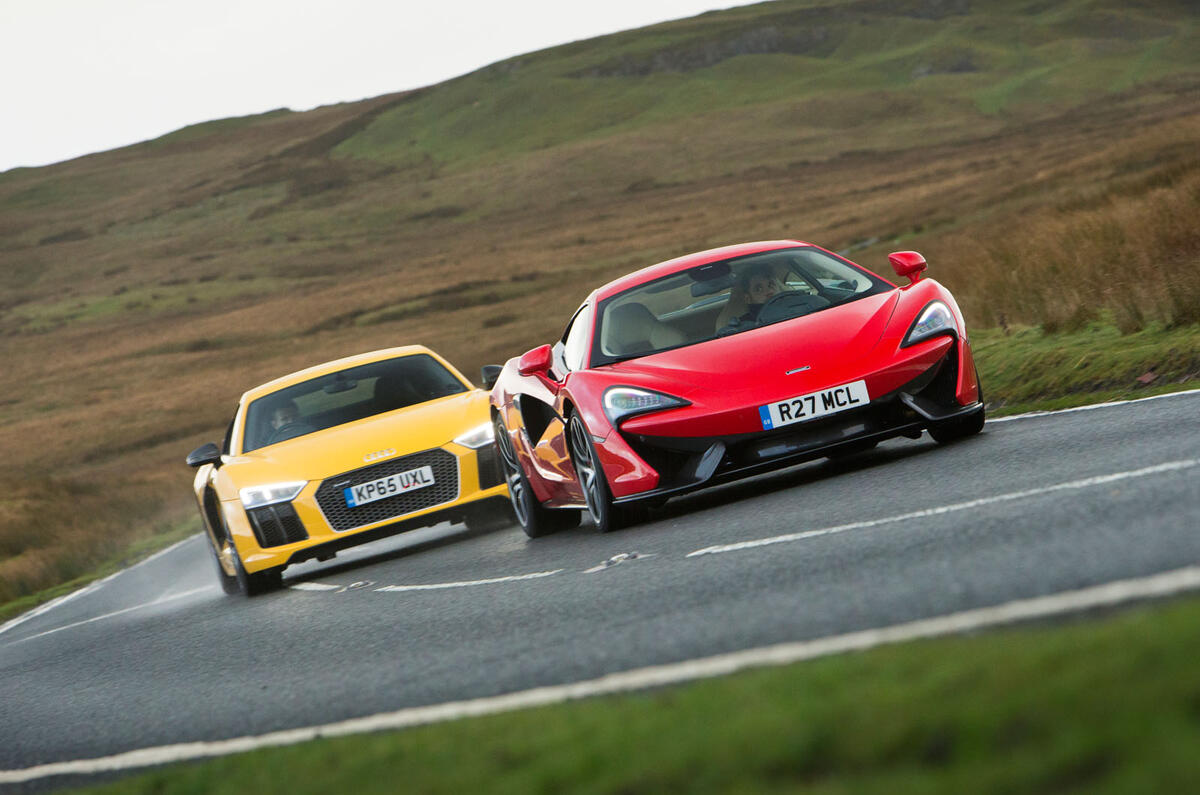

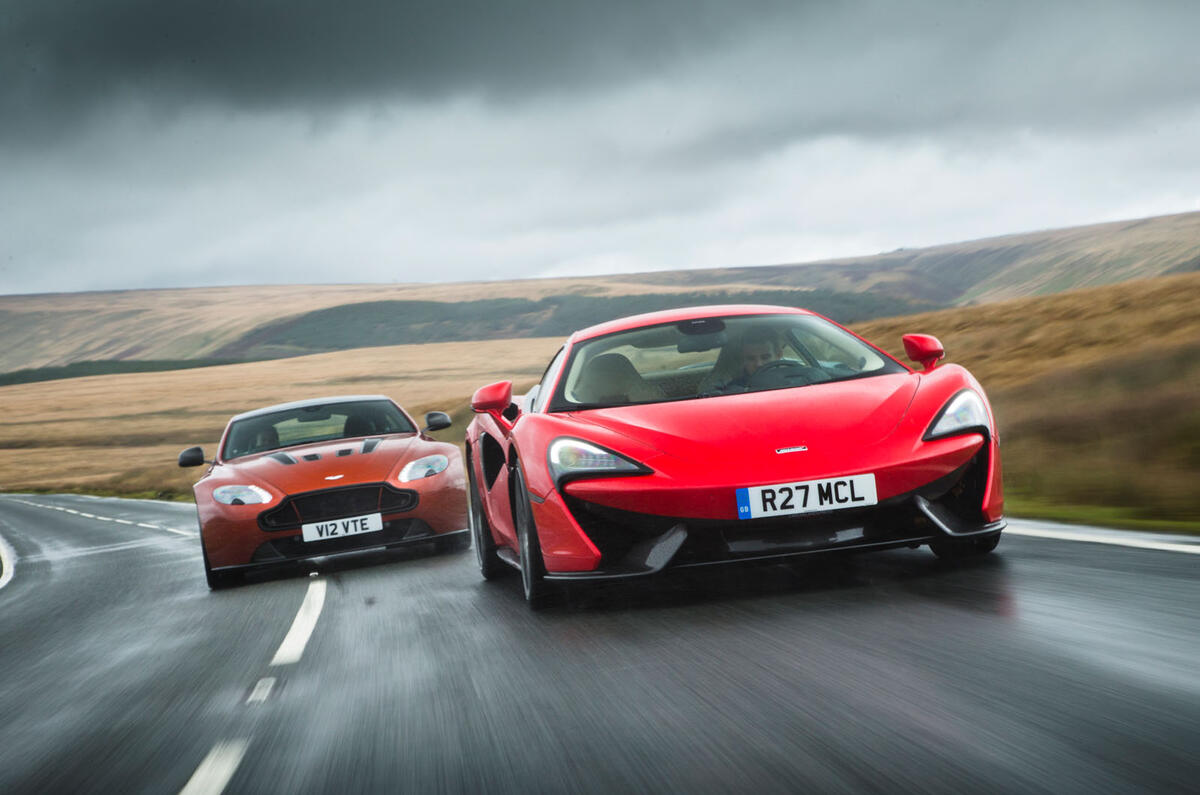
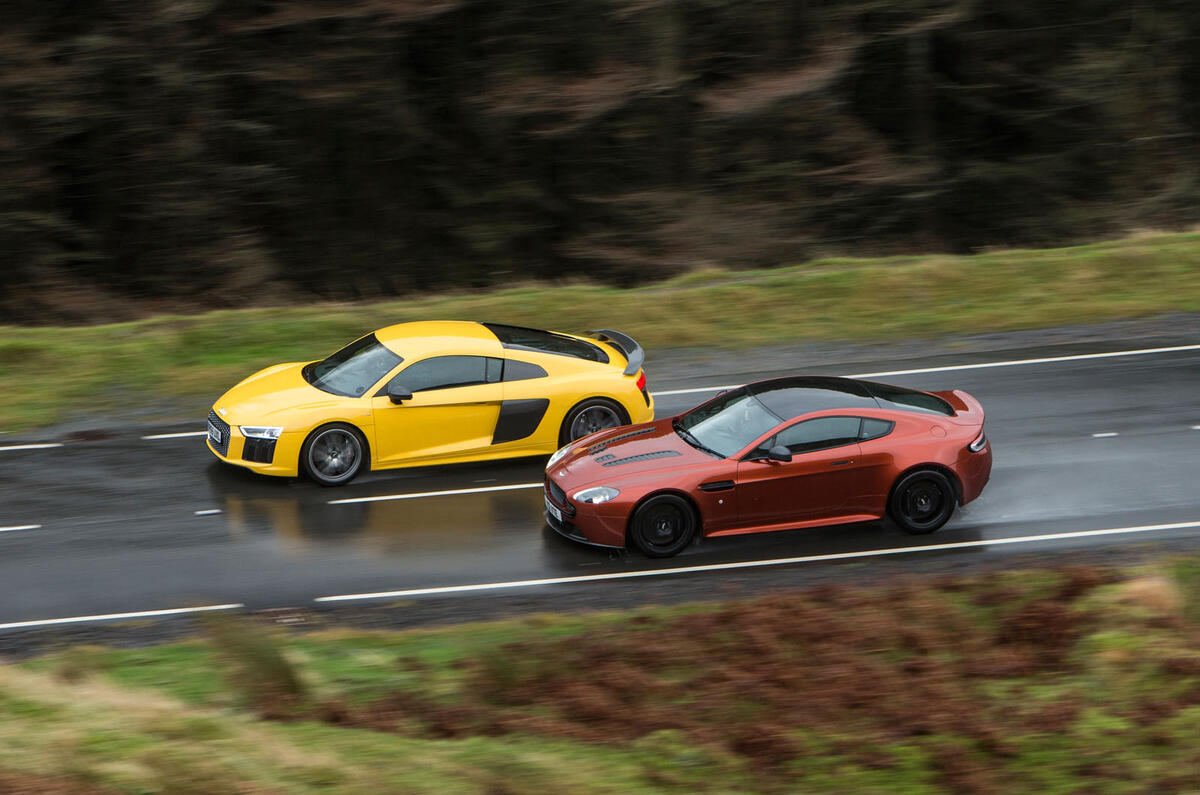
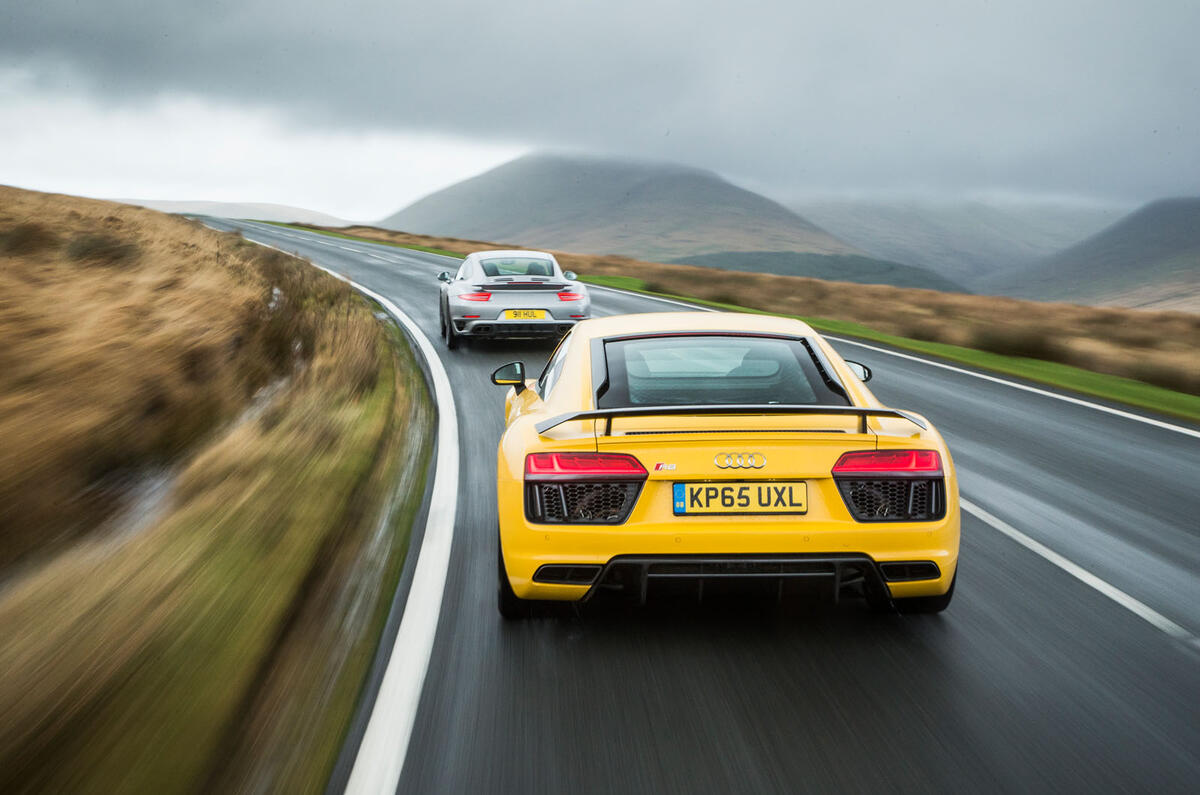






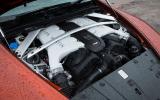

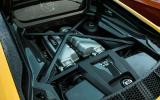
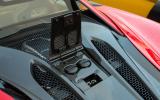



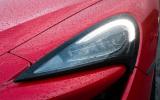

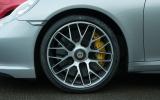
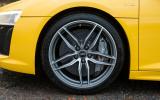
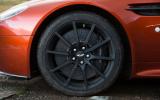
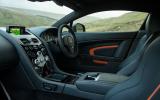
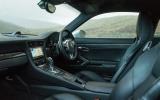
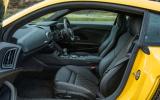

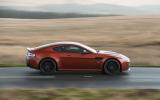
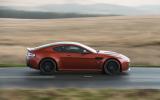

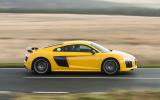
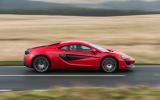
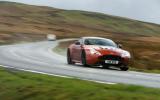

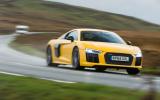




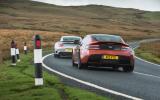









Join the debate
Add your comment
"It pulls the rug out from
The winning formula
That right there is the reason Ferrari cars like 458, Speciale and LaFerrari are better than competition and turn out to be the most desired cars by test drivers. No AWD or race mode needed.
Predictable result. And a reason to celebrate.